September 26, 2021
Martha O'Kennon
Fall is here in this hemisphere. Rainy. Humid when not. The Frogs spend most of their time huddling somewhere. It is rather quiet.
Remember the Colchicums? They throw up big floppy leaves in the Spring, then disappear. In the Fall, a large floppy flower resembling a large floppy Crocus comes up and practically falls over under its own weight, even before it gets rained on. The cultivated Fall Phlox seems to be at the moment at which it changes from blooming more to blooming less. You can still find a bit of Goldenrod which is still Golden, but not very often.
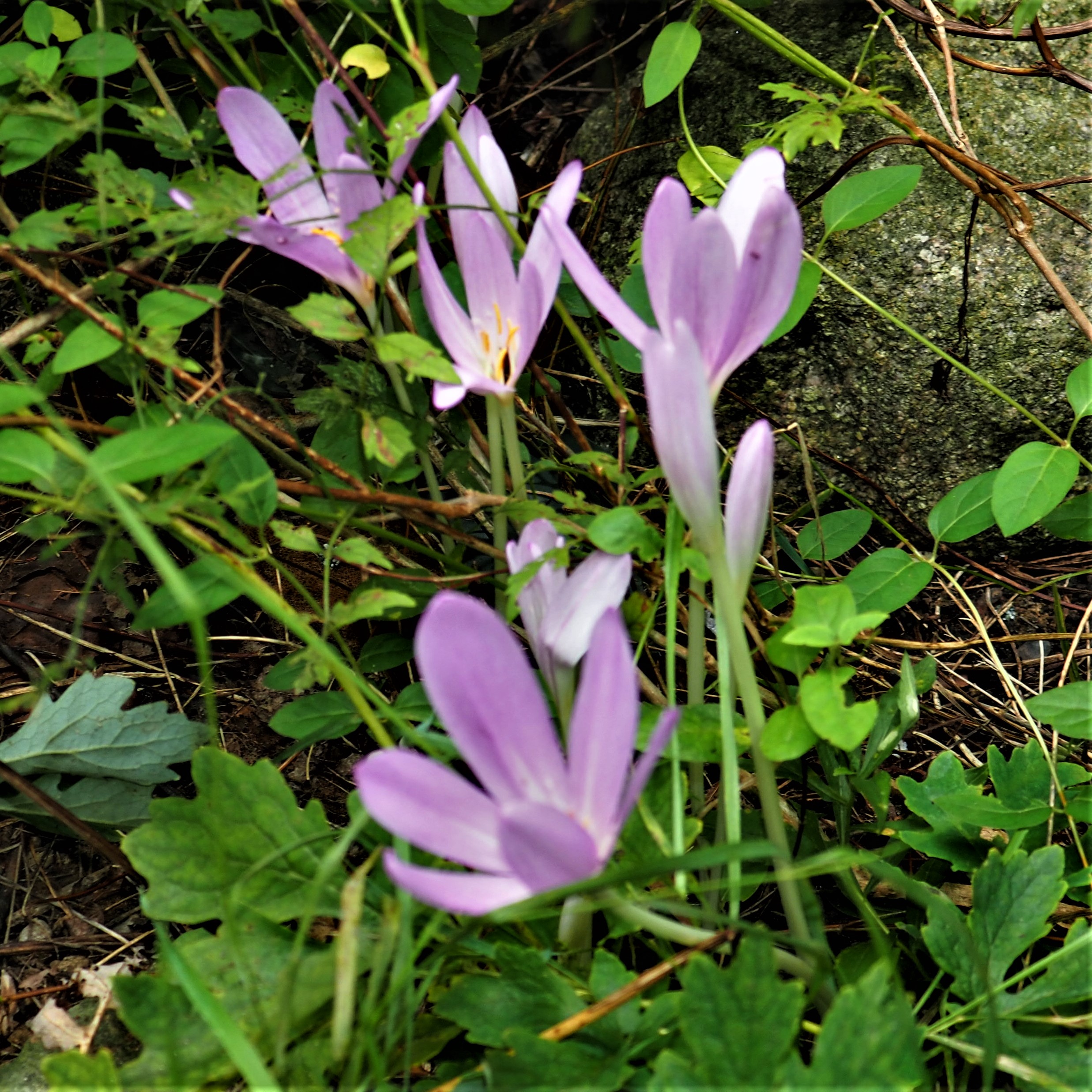
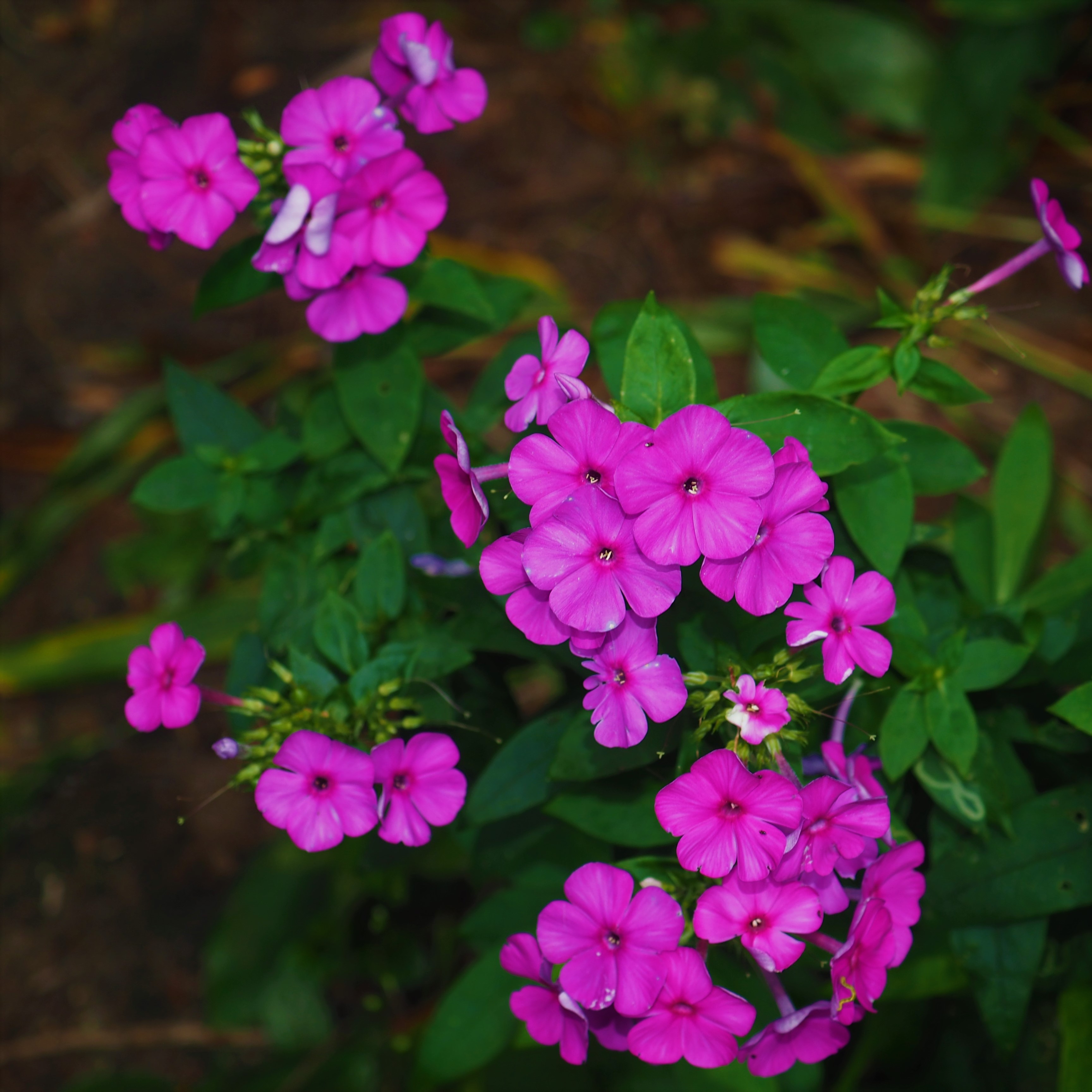

Remember that there is information in the name of the file for each image. You can see it by mousing over the
image - look at the lower left of the screen. Or you can click on the image to get to the (usually) larger image.
Then the info is displayed in the address line above. Sometimes the second click will actually display a
different view of the original image.
The ants also seem to have passed their prime. Here are a couple of Small Honey Ants, the most common Ant these days. Then what seems to be an Eastern Black Carpenter Ant. And that was that! I miss my Ants.
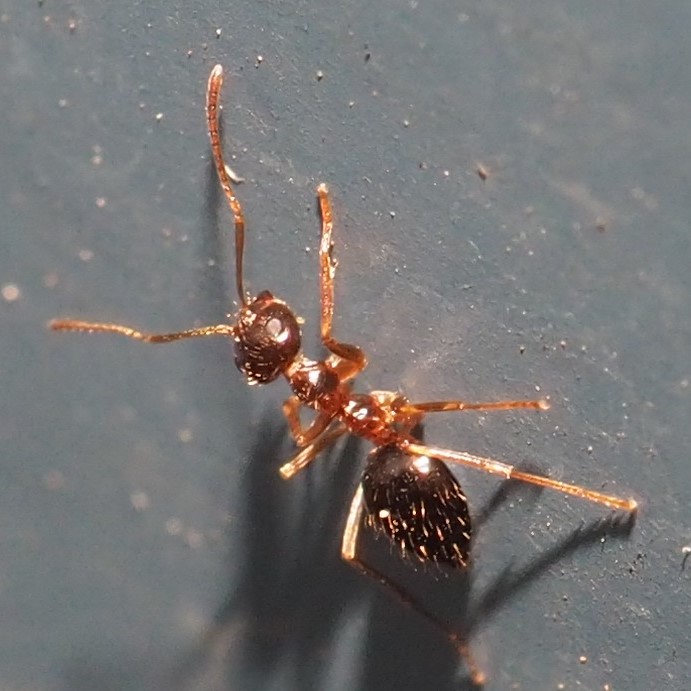
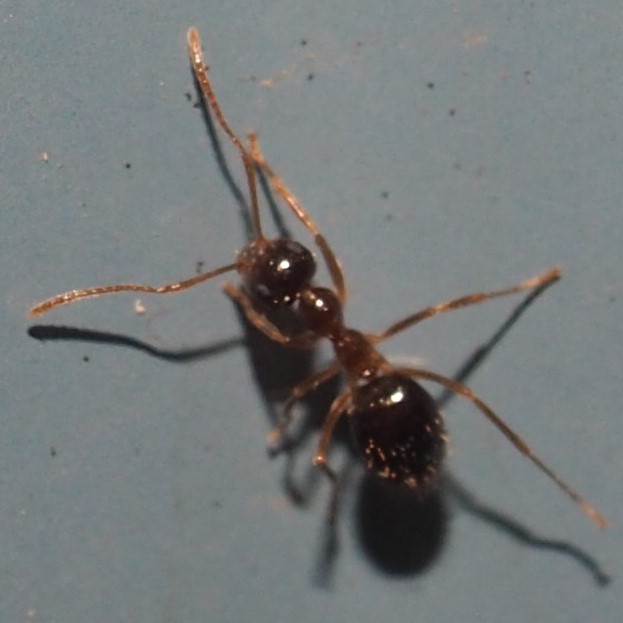
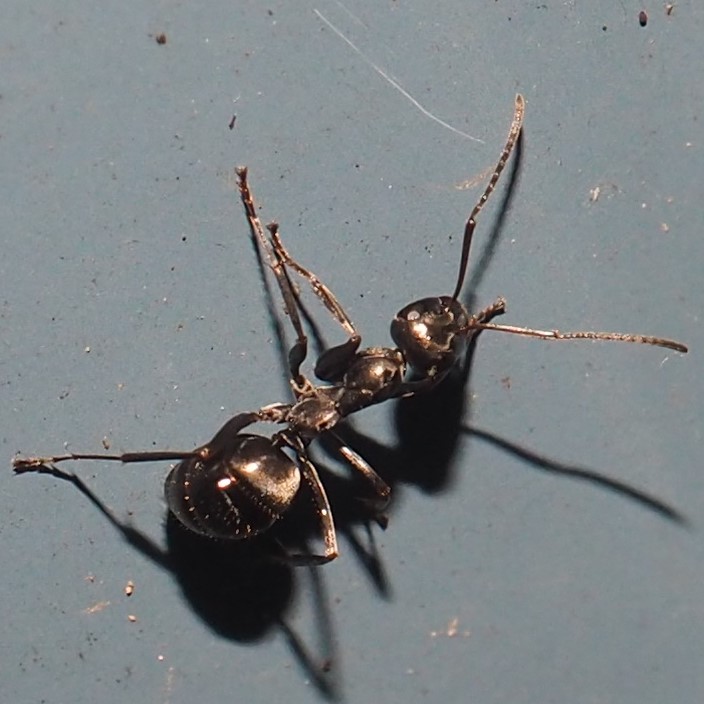
The Barklice have seen some quiet days. You can probably see Polypsocus corruptus on a quick trip around the Shop, but not on the West Wall. Here are a female and then a male. Graphopsocus cruciatus adults are all over now, and also quite a few nymphs.
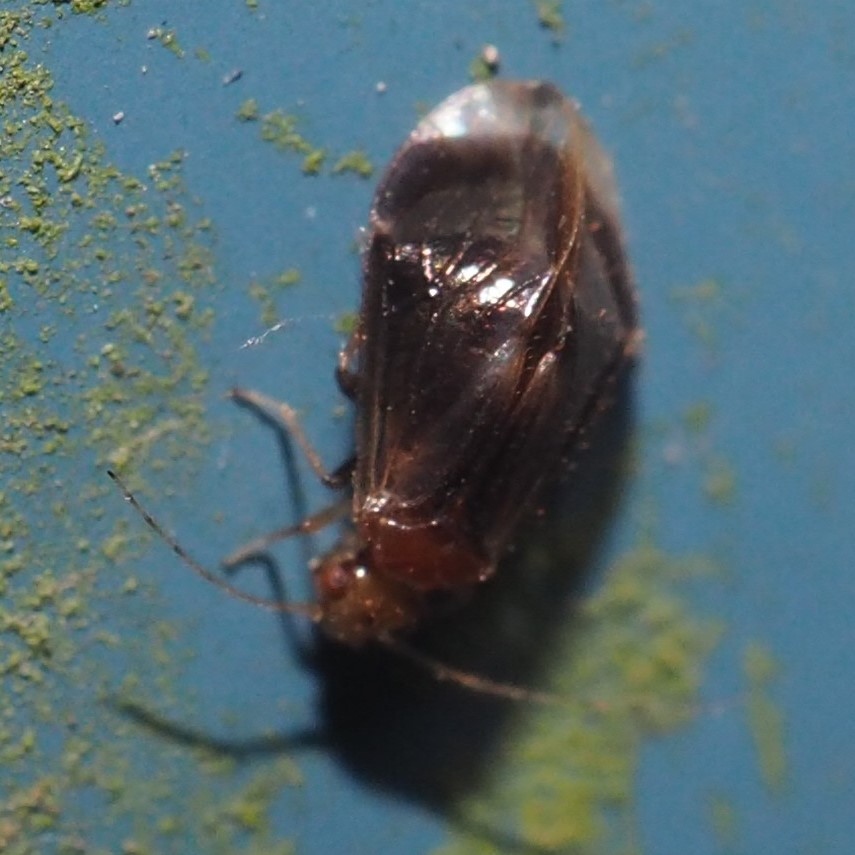


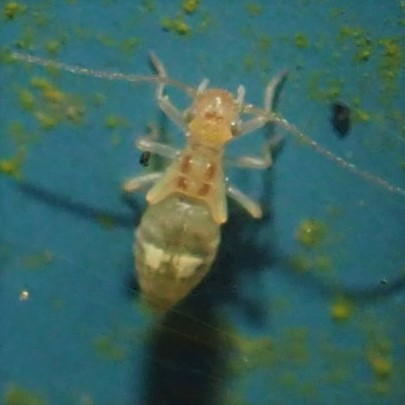
Here is an Ectopsocus meridionalis female laying eggs. Many eggs. Third is an Echmepteryx hageni adult.
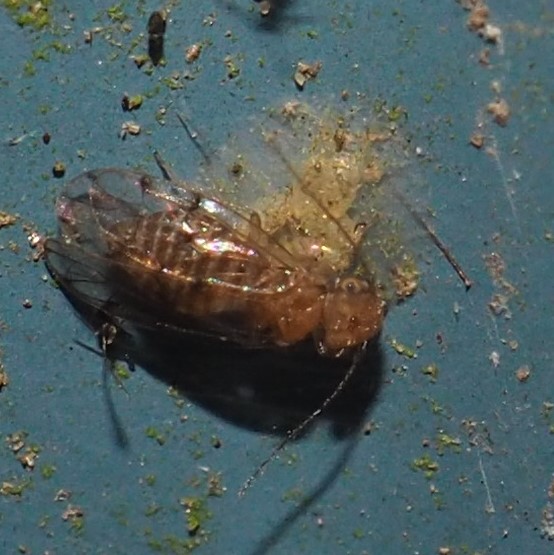
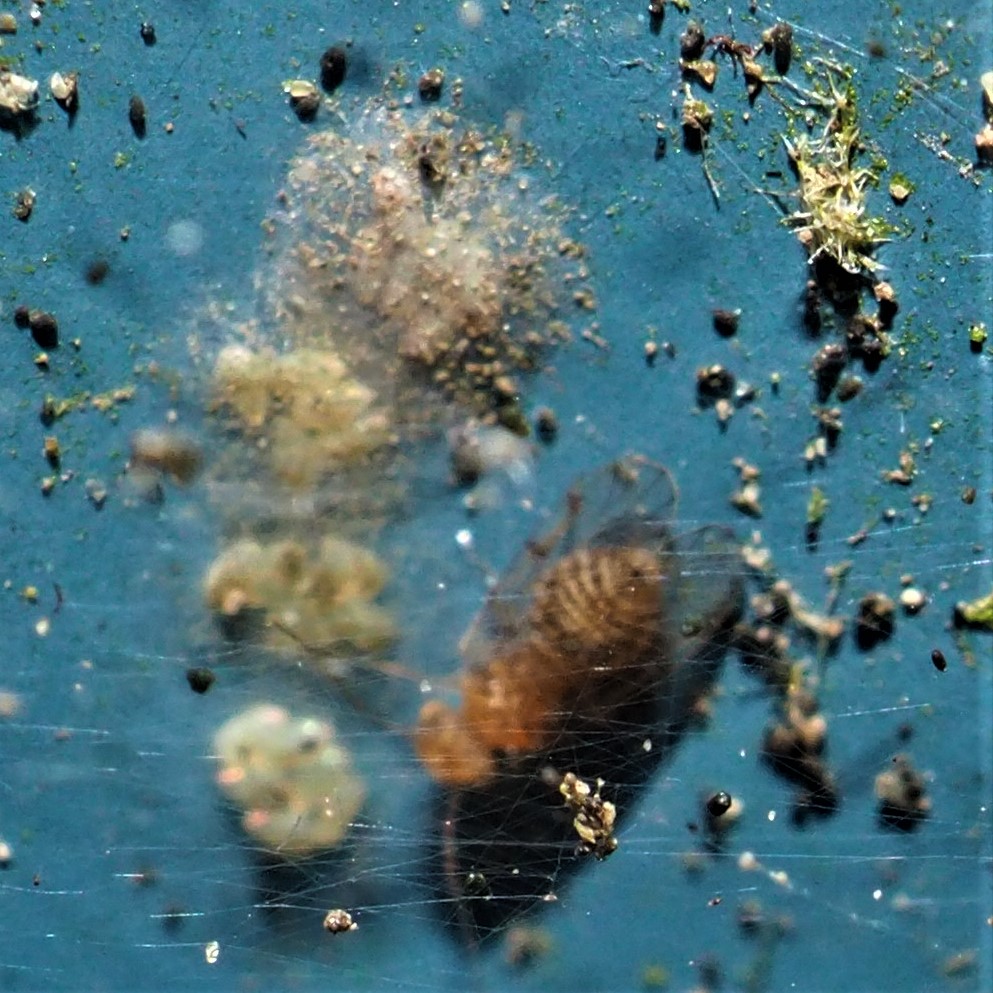
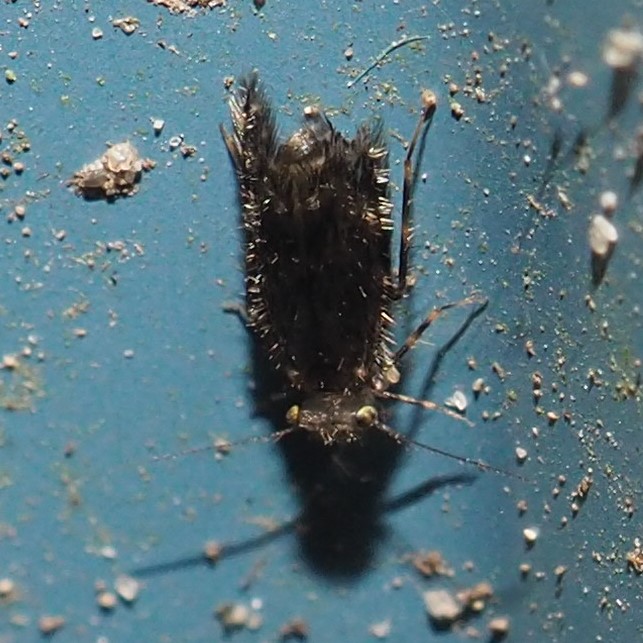
For some reason, we had a population explosion of Trichadenotecnum alexanderae on the 23rd. I shot at least a half-dozen on the South and East Walls. Second is probably genus Valenzuela. I don't recognize the third one. It showed up for about three days running. Fourth is a Mystery creature with dark yellow eggs.

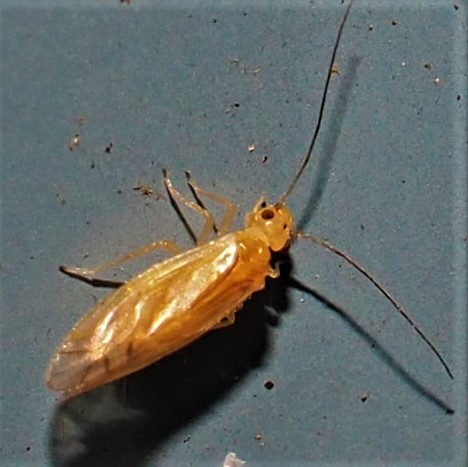
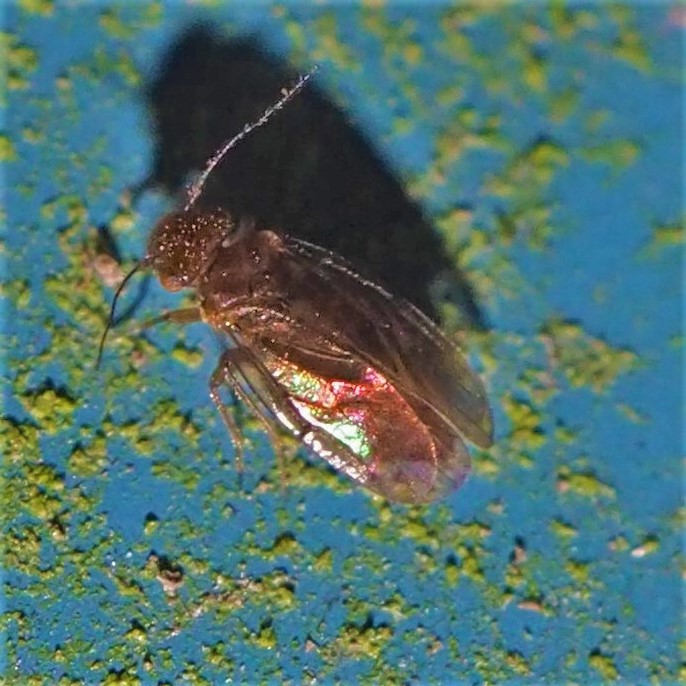
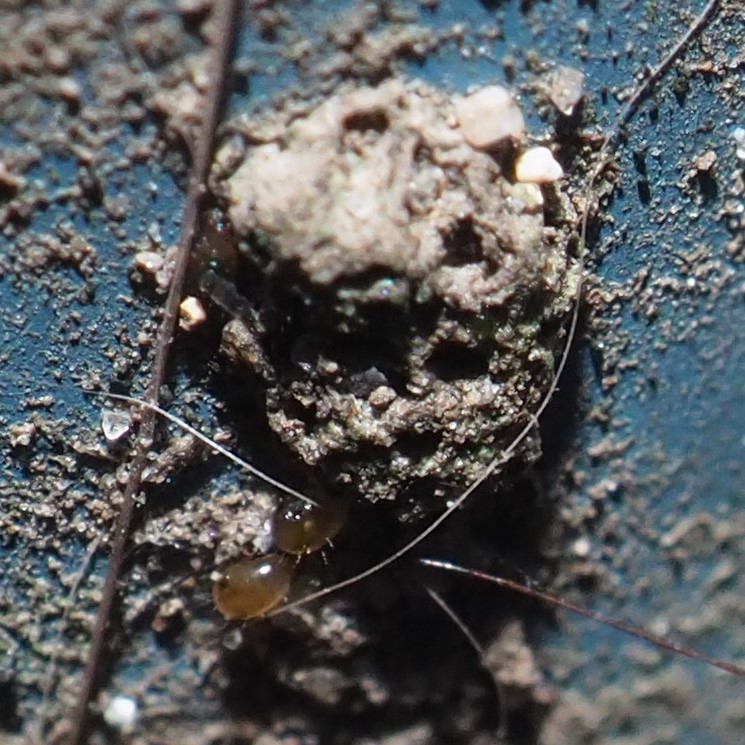
We started seeing these little nymphs (white with black markings and covered in some kind of debris, which Diane Young says is common dress code for many nymphs, back a couple of weeks ago, about September 12th. It sat on North panel 11, and I labeled it Teliapsocus conterminus, although the adult of that name had flown long before that. We have watched these nymphs for two weeks now, as some days we saw up to seven of them. They occupied panels 10-13 and seemed to move around freely. Picture 2 shows little winglets developing on September 16th. On the 19th, the wings were larger. Picture 4 shows the wing development on the 23rd.


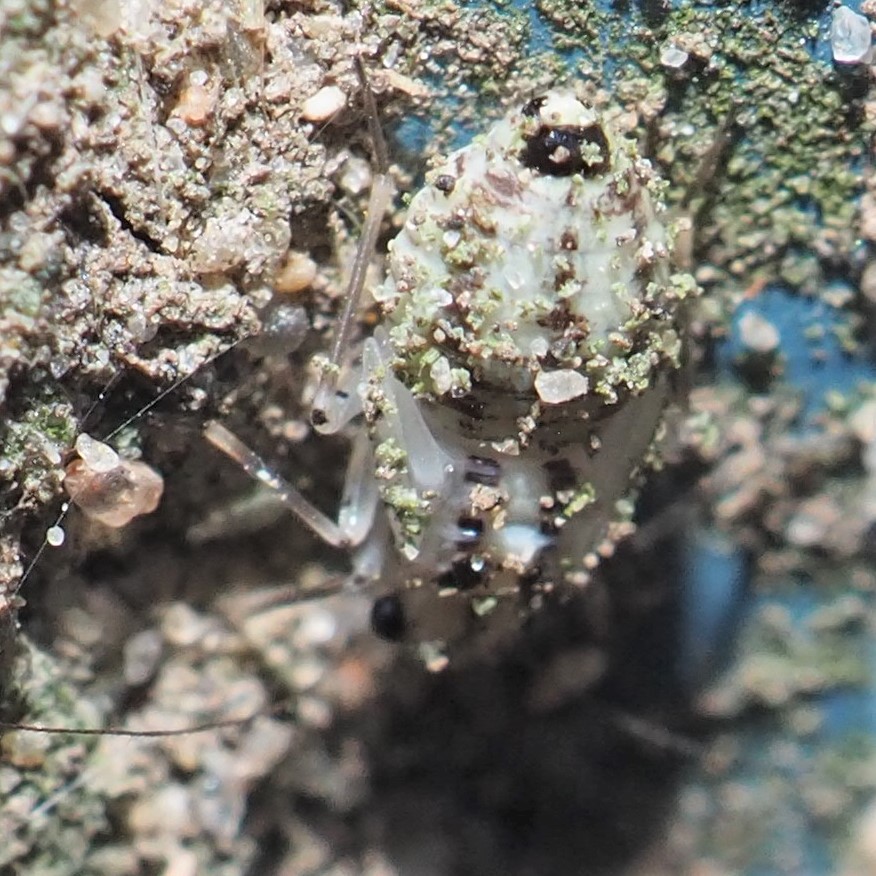
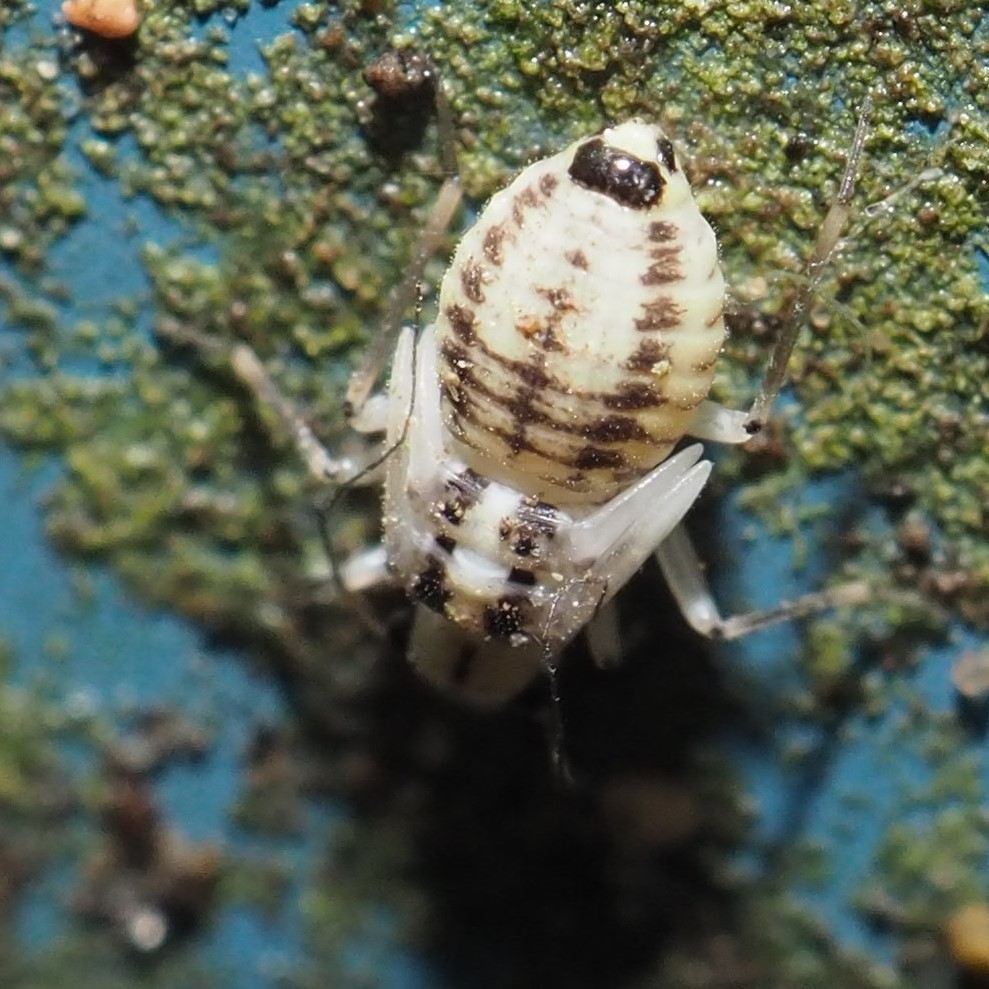
A few days ago, I started to notice that the nymphs were becoming scarcer. Now I think they probably were becoming adults and flying off. On the 24th, there was one adult on panel 11. It rained that night and the new adult was gone on the 25th. But fortunately Diane Young was able to identify the adult and now the nymphs as Psocus leidyi, a new species for me. What a treat to have been able to watch the nymphs for two weeks from very tiny to adult and what good luck to have seen the adult for a few hours on the day it matured. Flash. This is what I get for going out too early (and too dark) this morning to check on the nymph on panel 15. Well, it turns out that it had quietly gone adult so so far we have seen two adult Psocus leidyi. And on panel 11, another nymph has been found (picture 3). So the fun is not over - yet! - with Psocus leidyi.
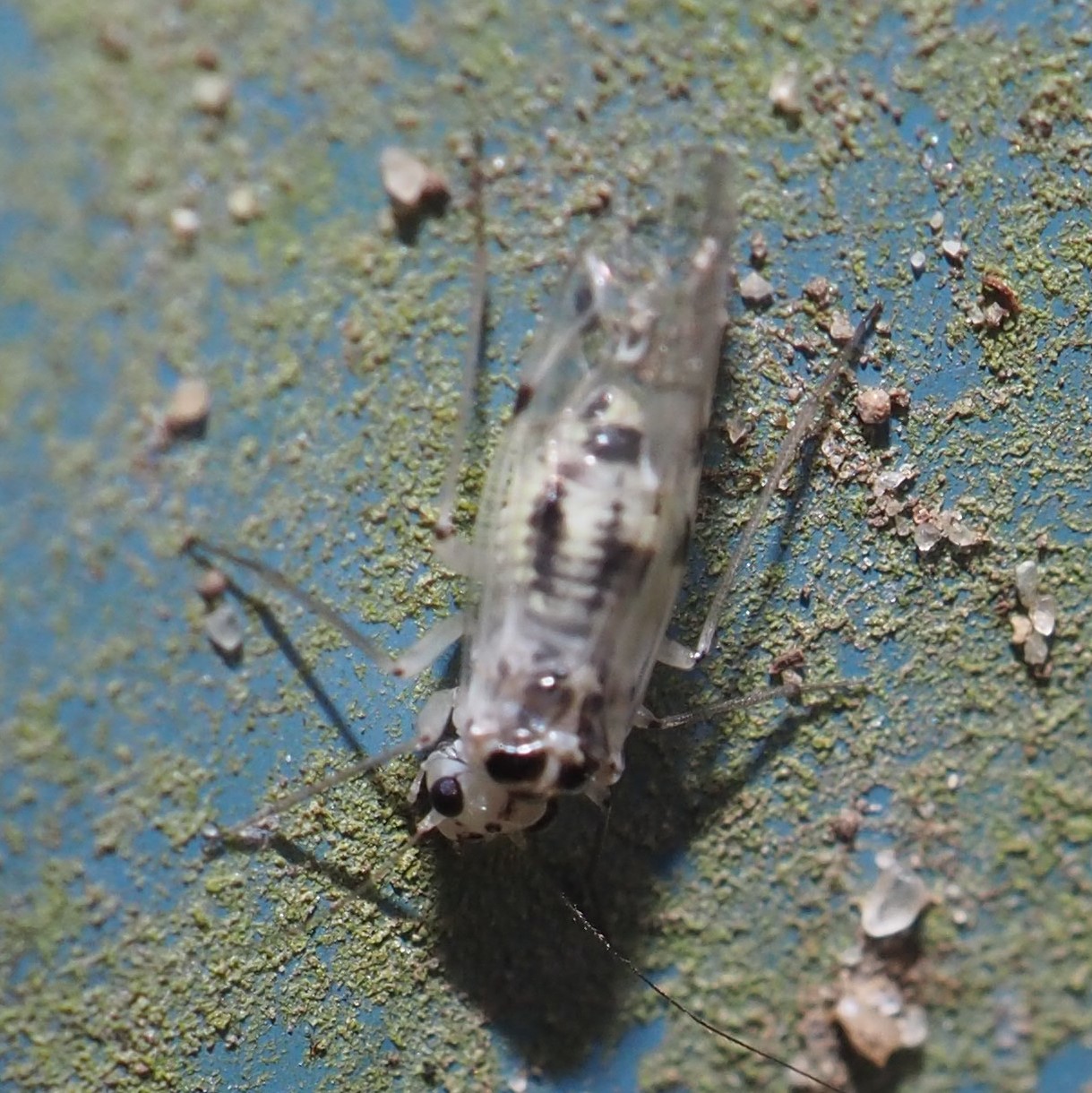
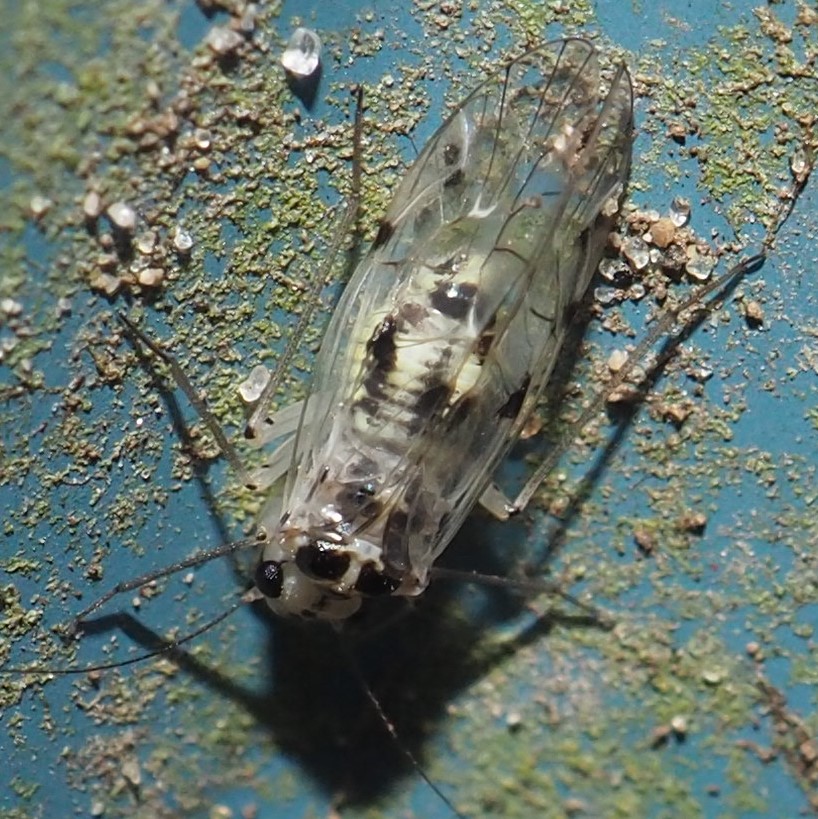

Of course the Bees have been very active on all those Asters. Especially Honey Bees and smaller Bumblebees.
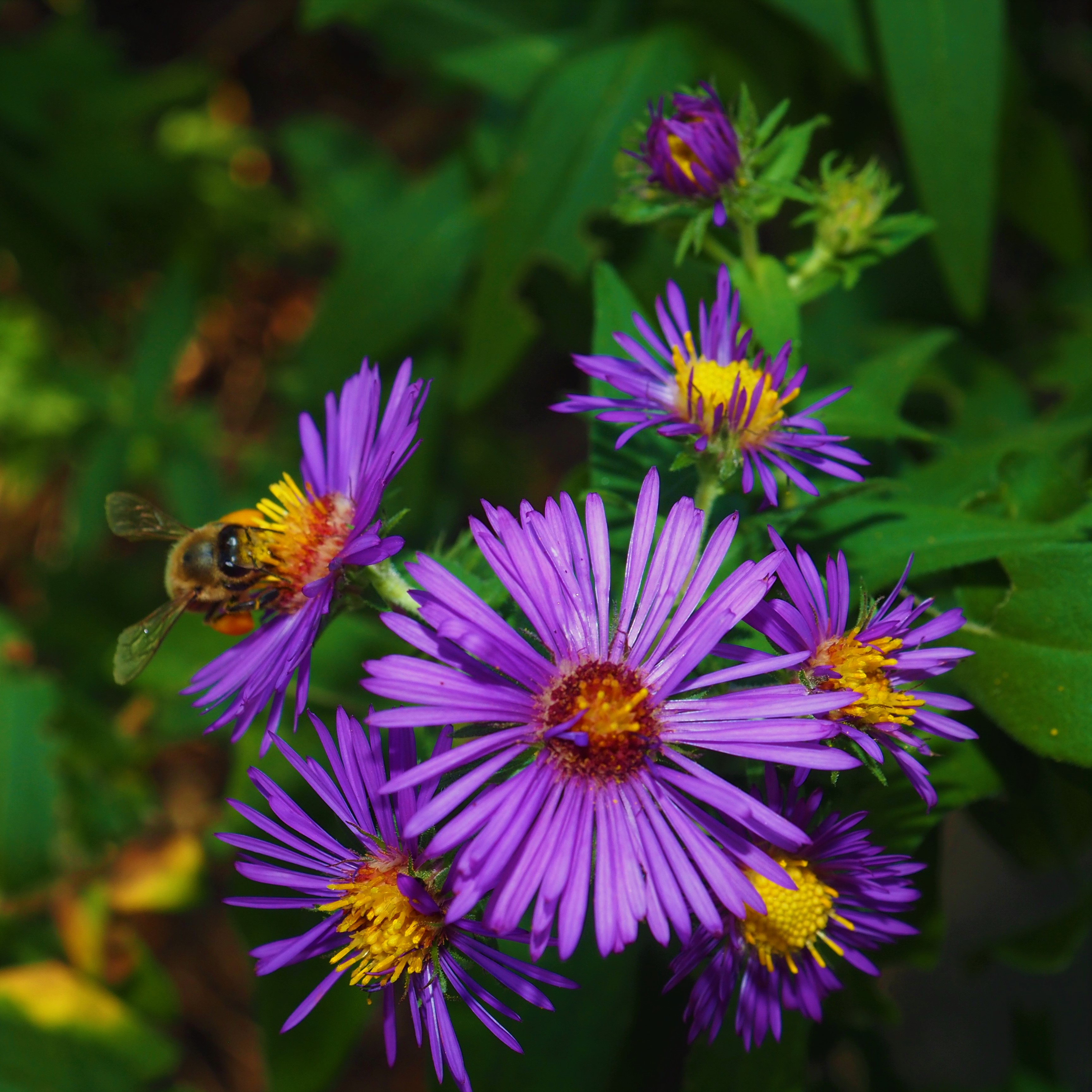
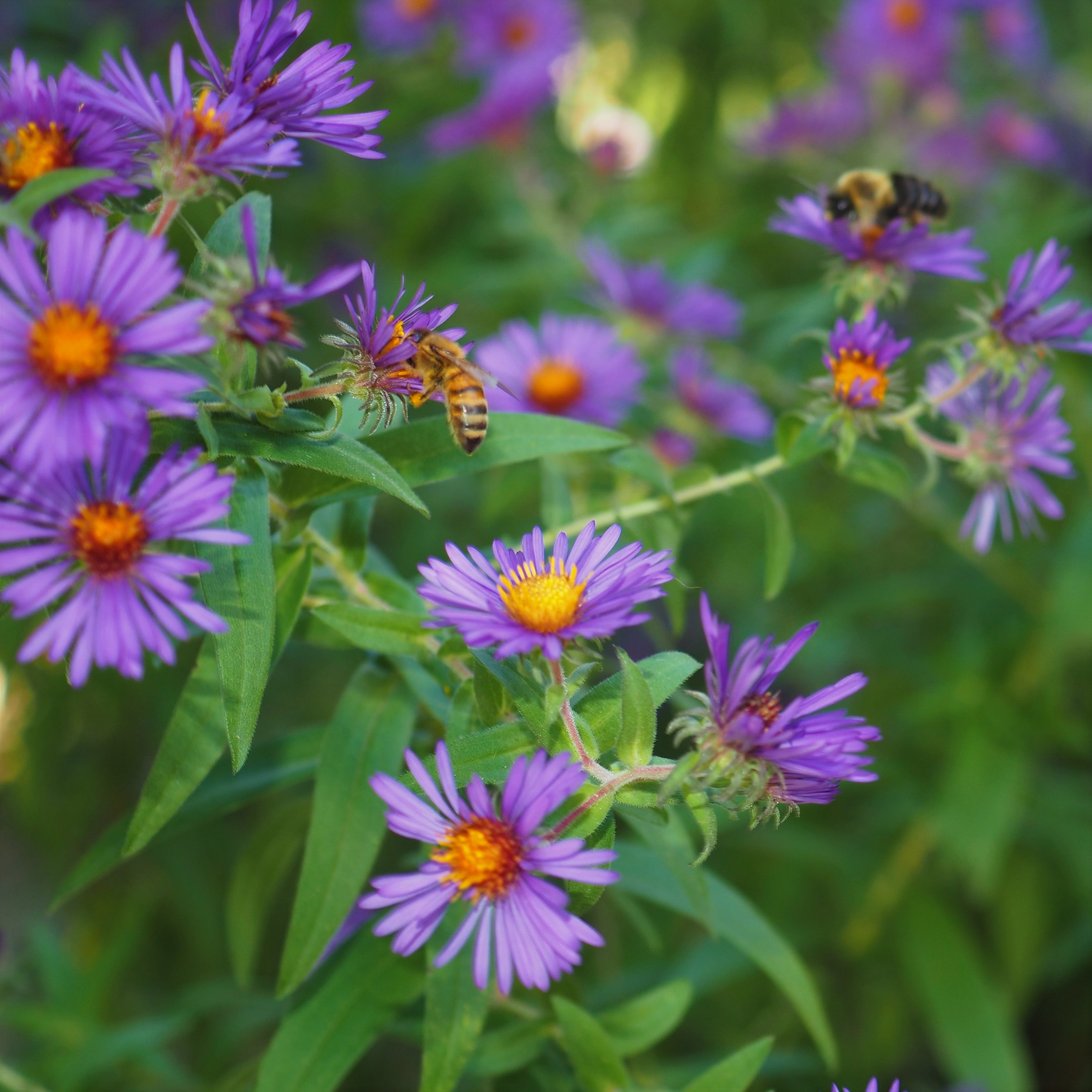

A few more Bees, unfortunately not ones I recognize.
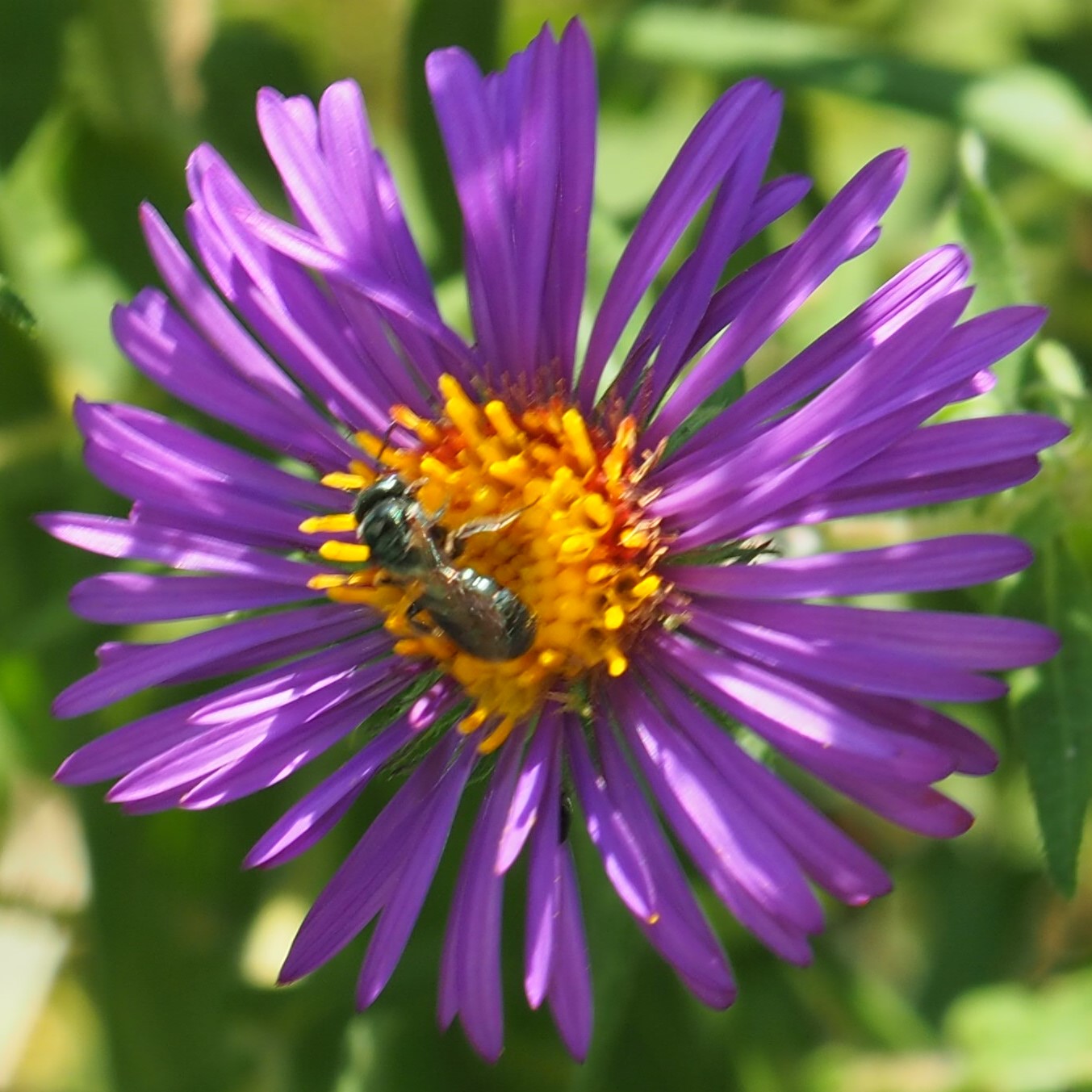
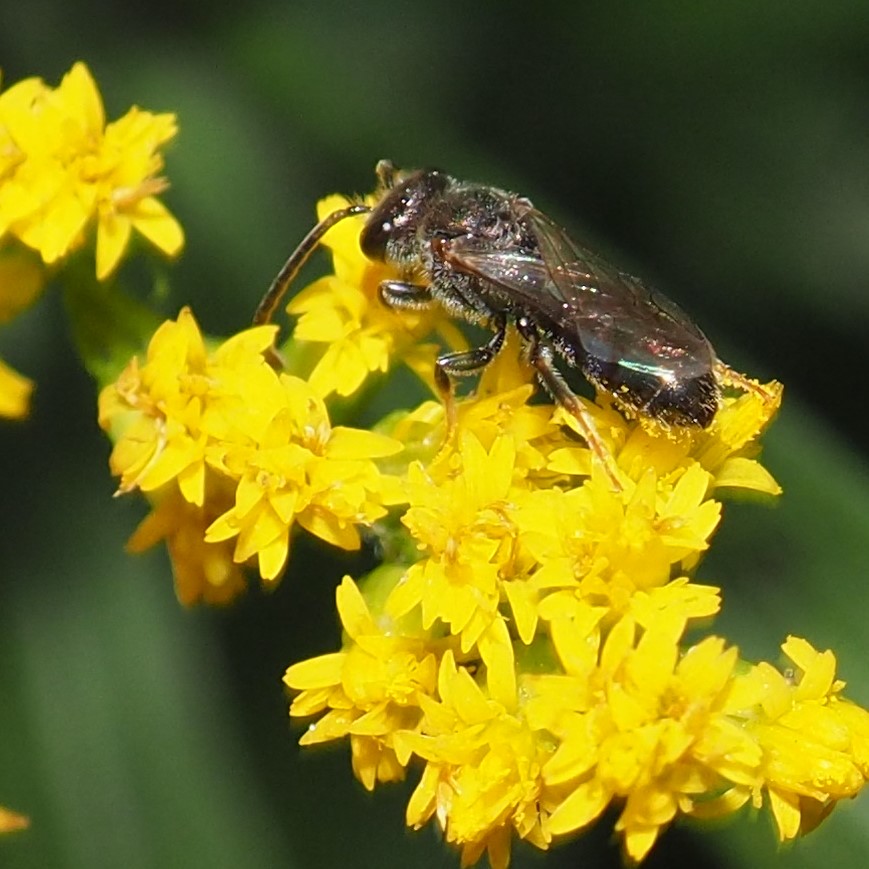
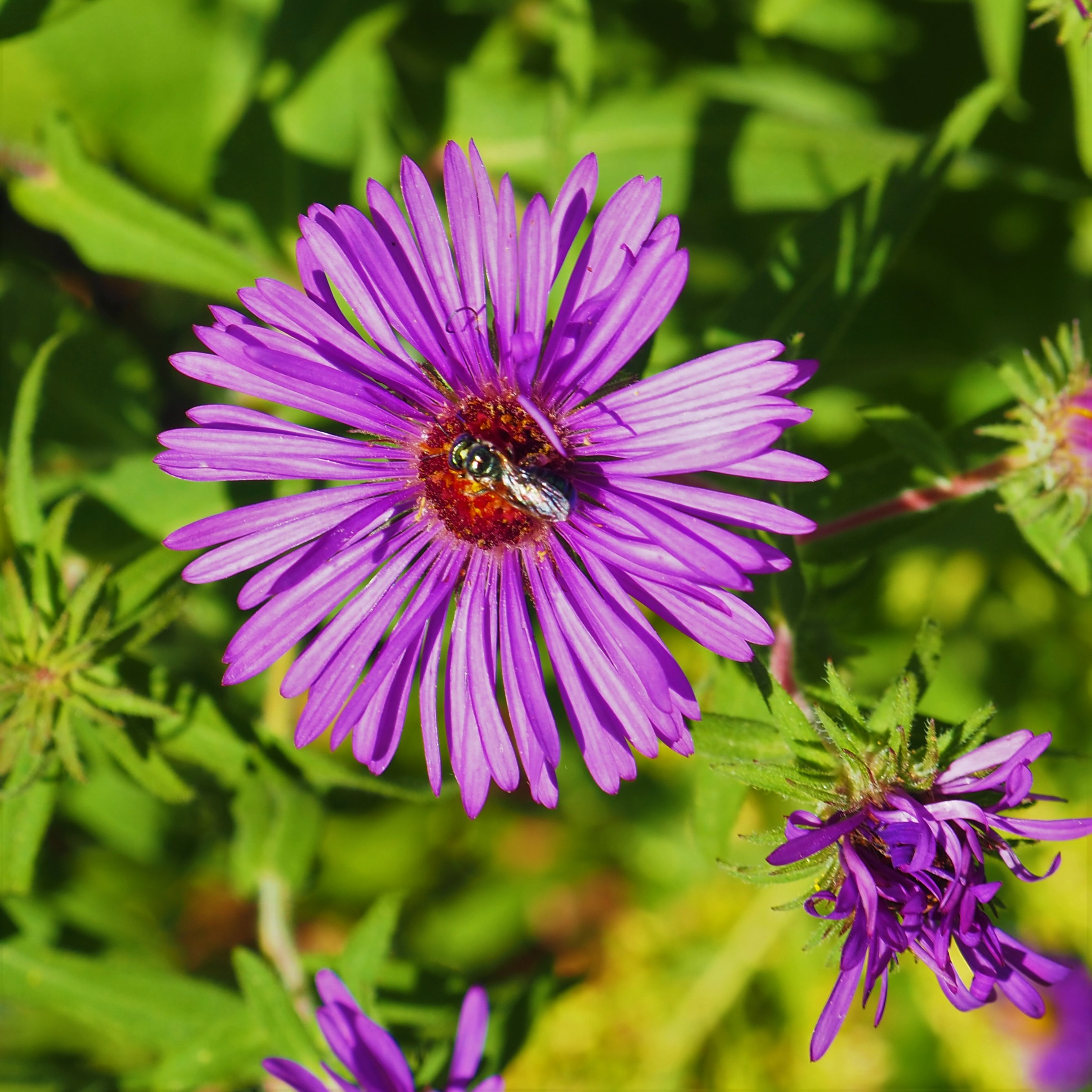
As for Beetles, they seem mostly to have been claimed by Spiders. Except, of course, for the ferocious (even when dripping wet!) Asian Lady Beetles.
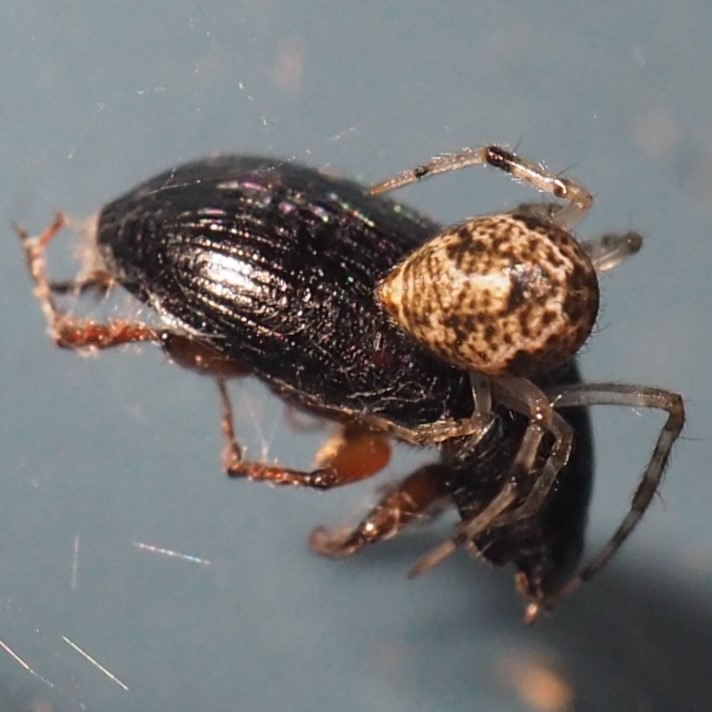
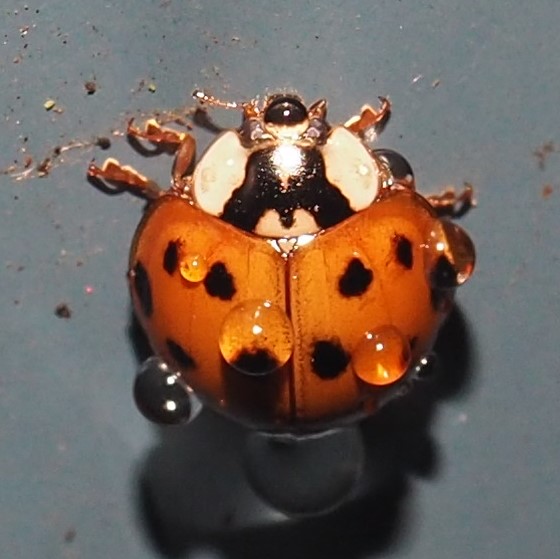
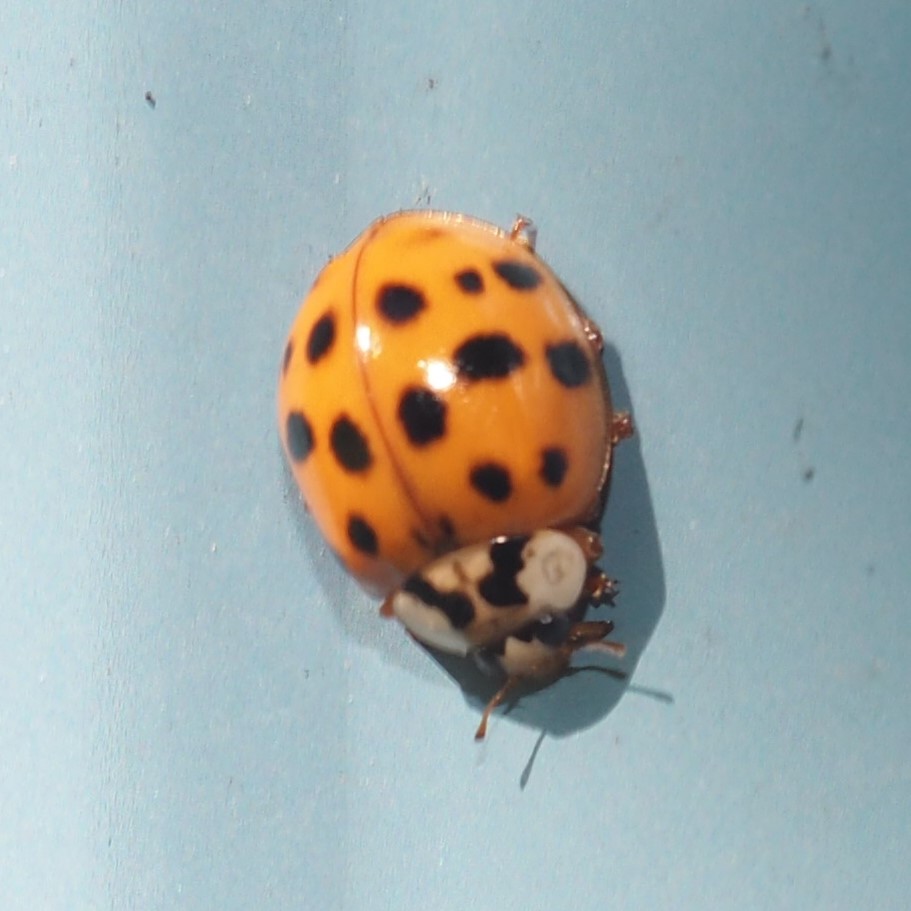
This week for the first time since the Goldenrod invited them along, I didn't spot a single Ambush Bug. But the Assassin Bugs (Zelus luridus) are still alive and growing.
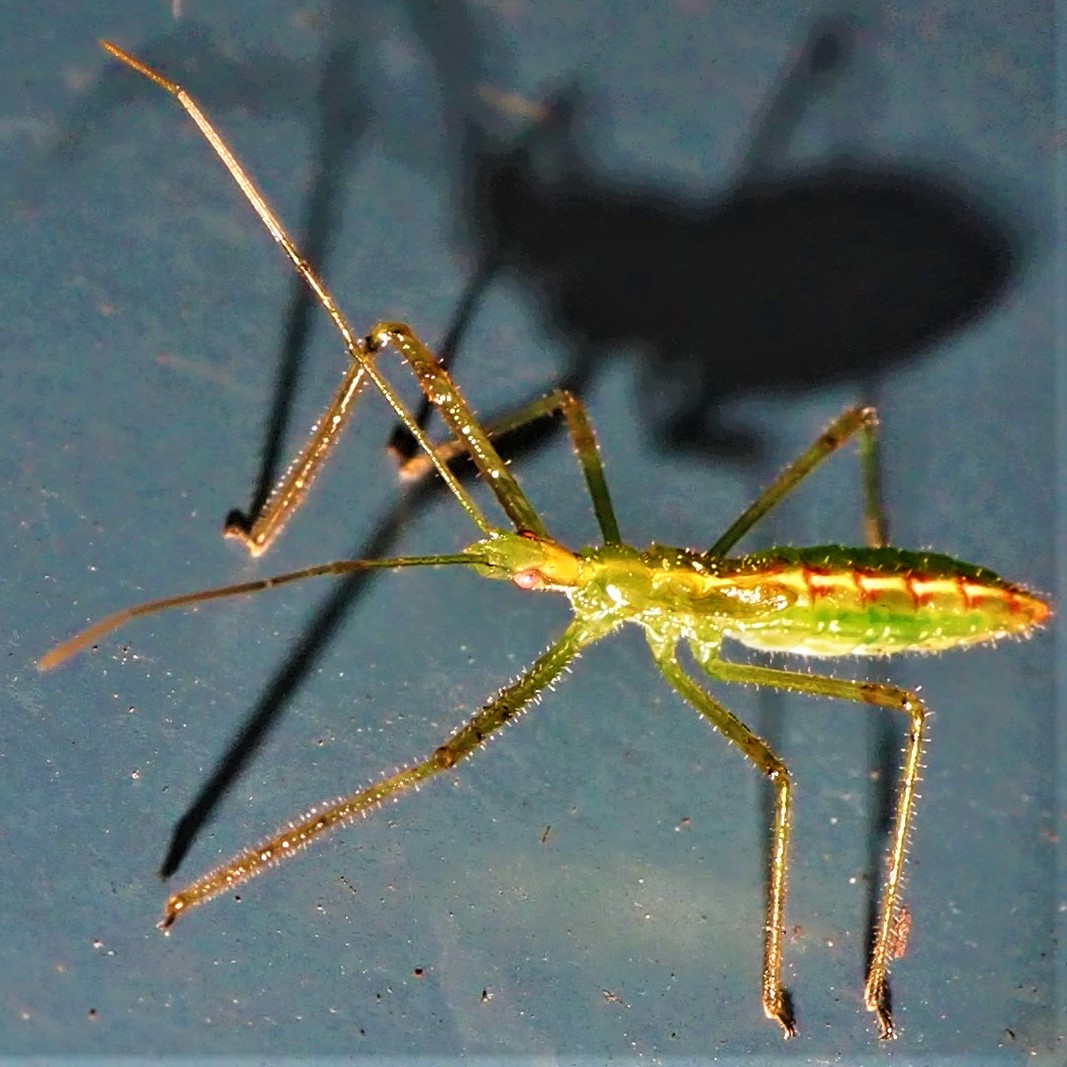
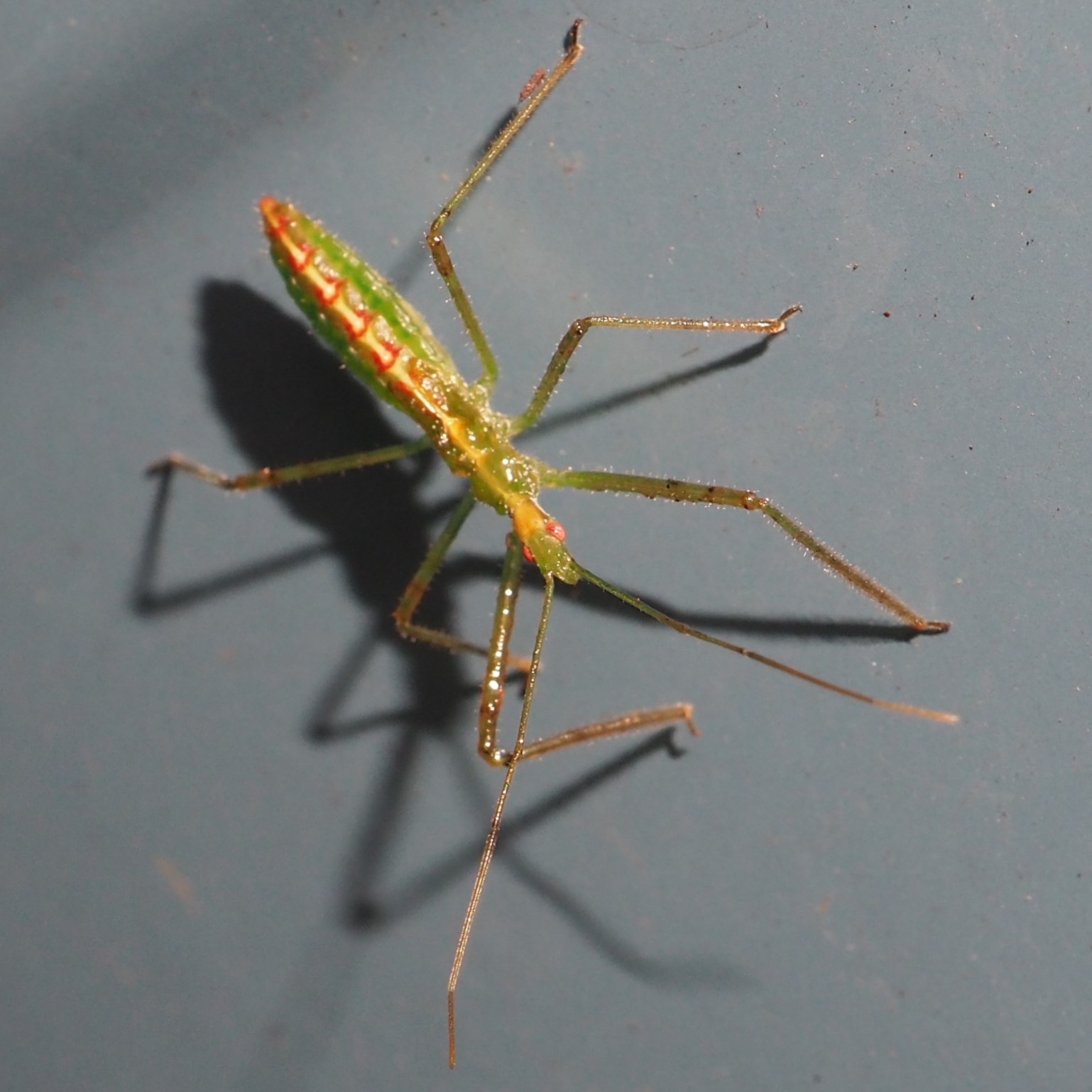

Here is where I usually jump out of Alphabetical order to get to the Leafhoppers. They were very quiet this week. But at least we did see one Erasmoneura vulnerata, some kind of Eratoneura, and some kind of Erythridula.
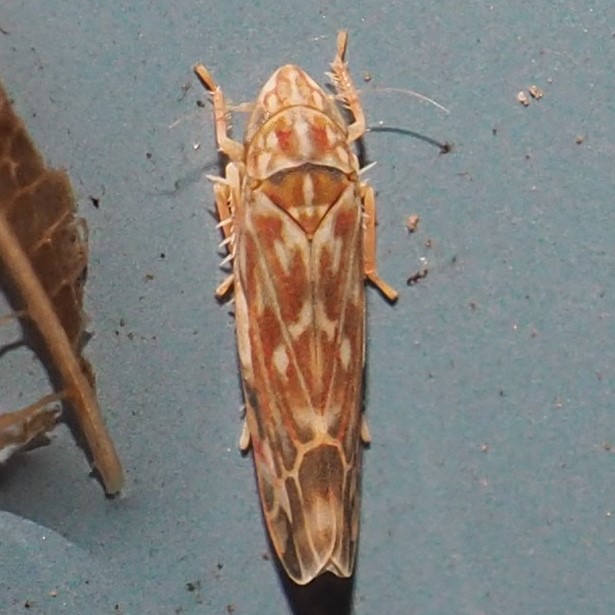
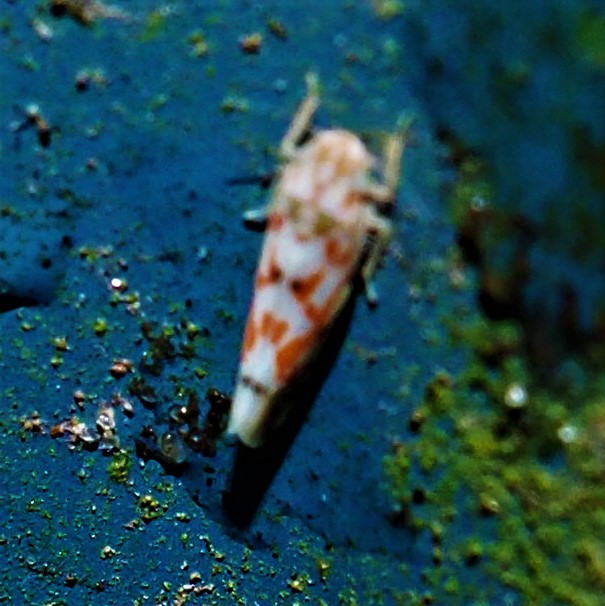
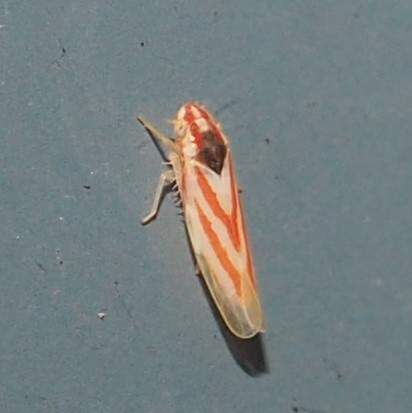
First is the Red-banded Leafhopper and second is a rained-on Jikradia olitoria, or as some say, the Coppery Leafhopper.
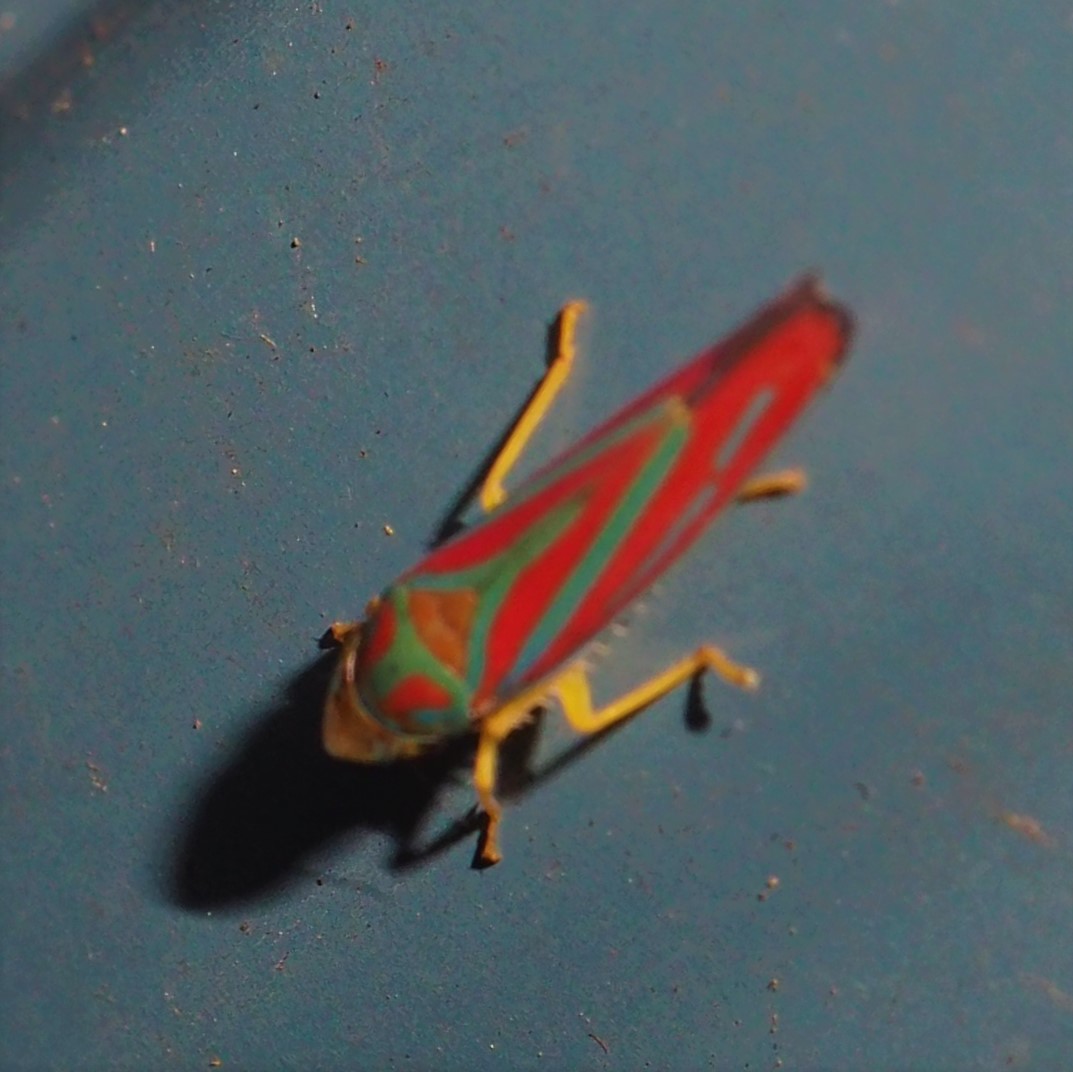
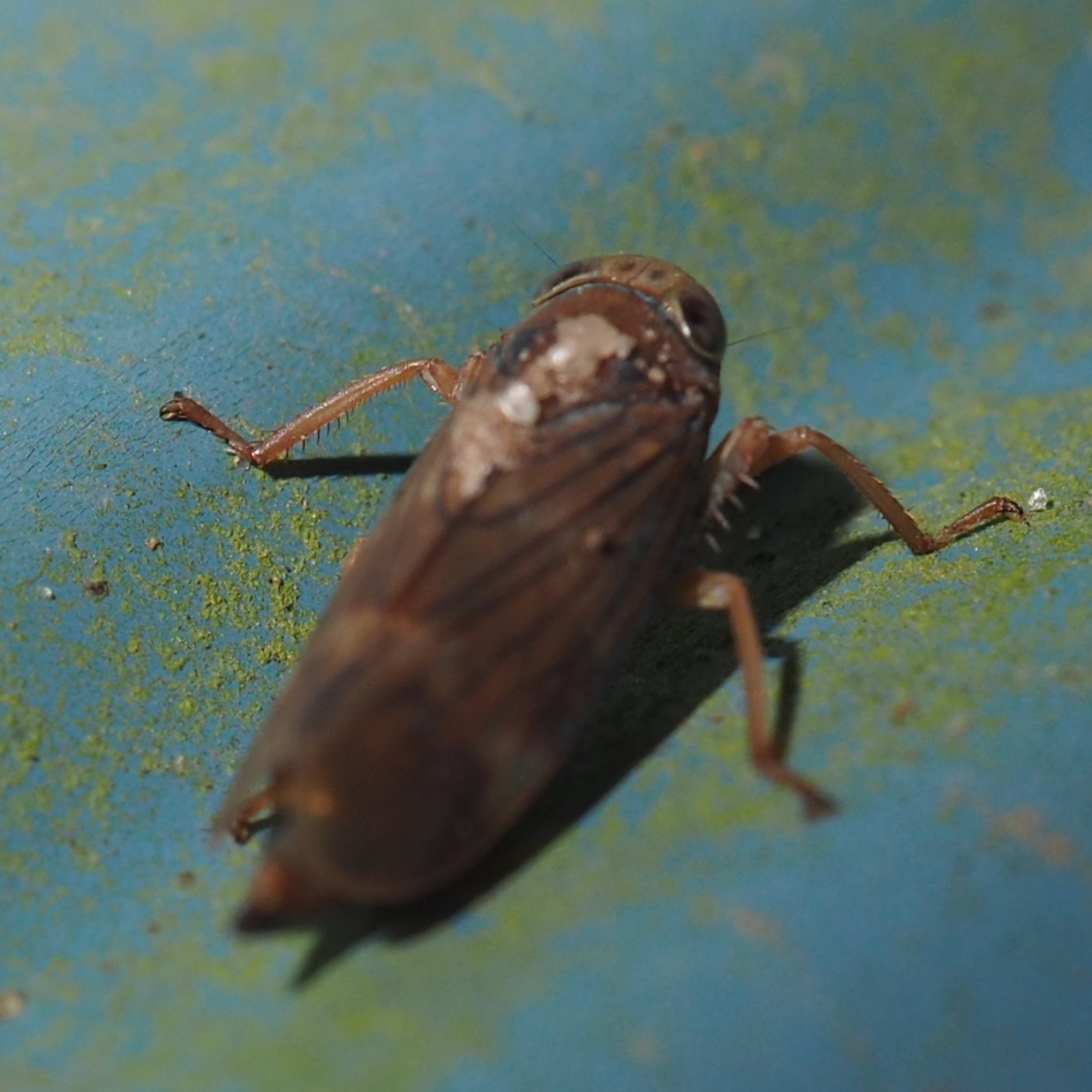
Here is a gorgeous Plant Bug Nymph. I'm not sure what it is, but it seems to belong to genus Anthocoris. The Dirt-colored Seed Bug, Drymus Unus, is already looking for love in the spent Goldenrod. The only other Bug I seem to have found is one of the Stilt Bugs.
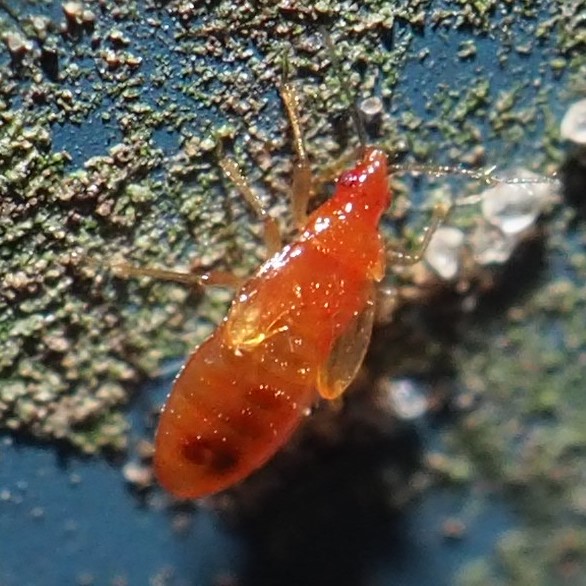
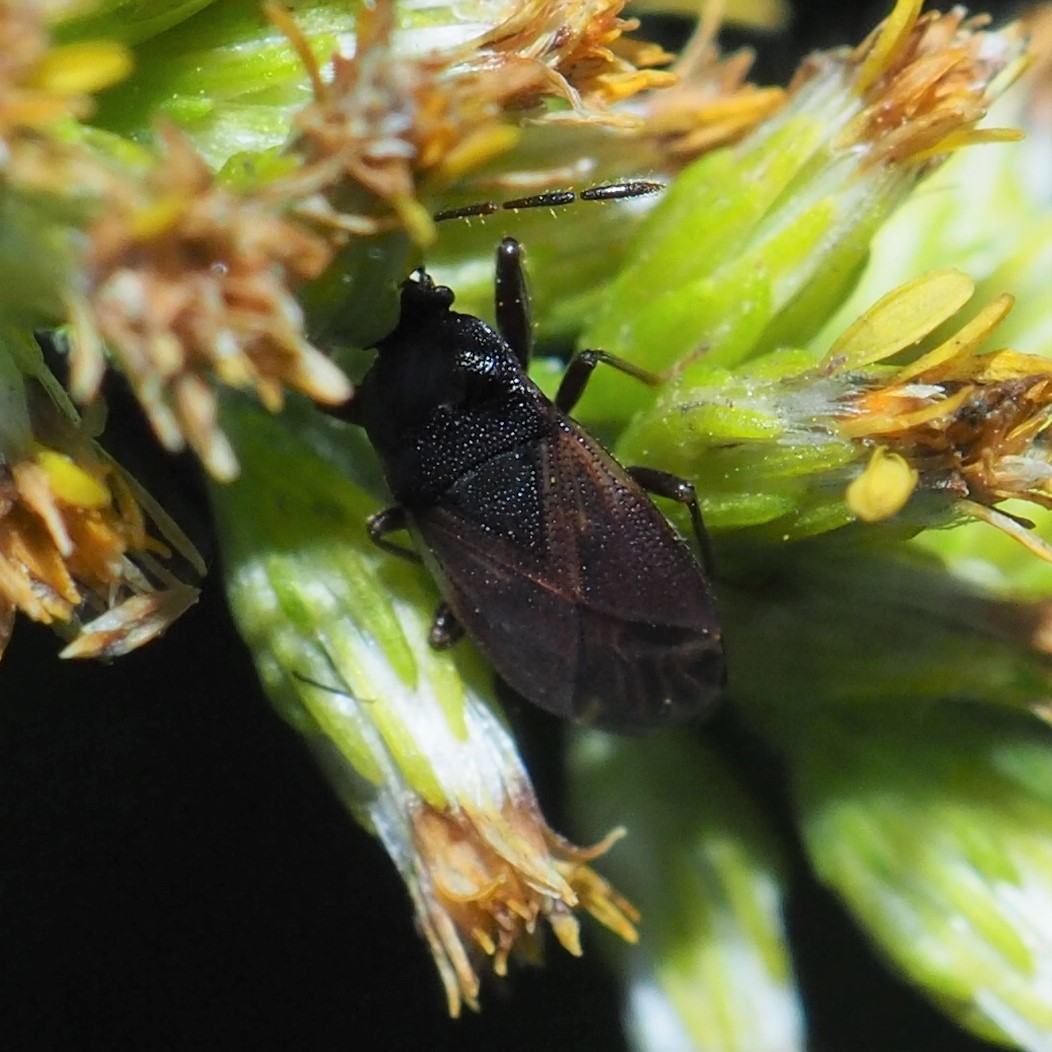

We now find ourselves in the Flies. As usual, we start off with Crane Flies.
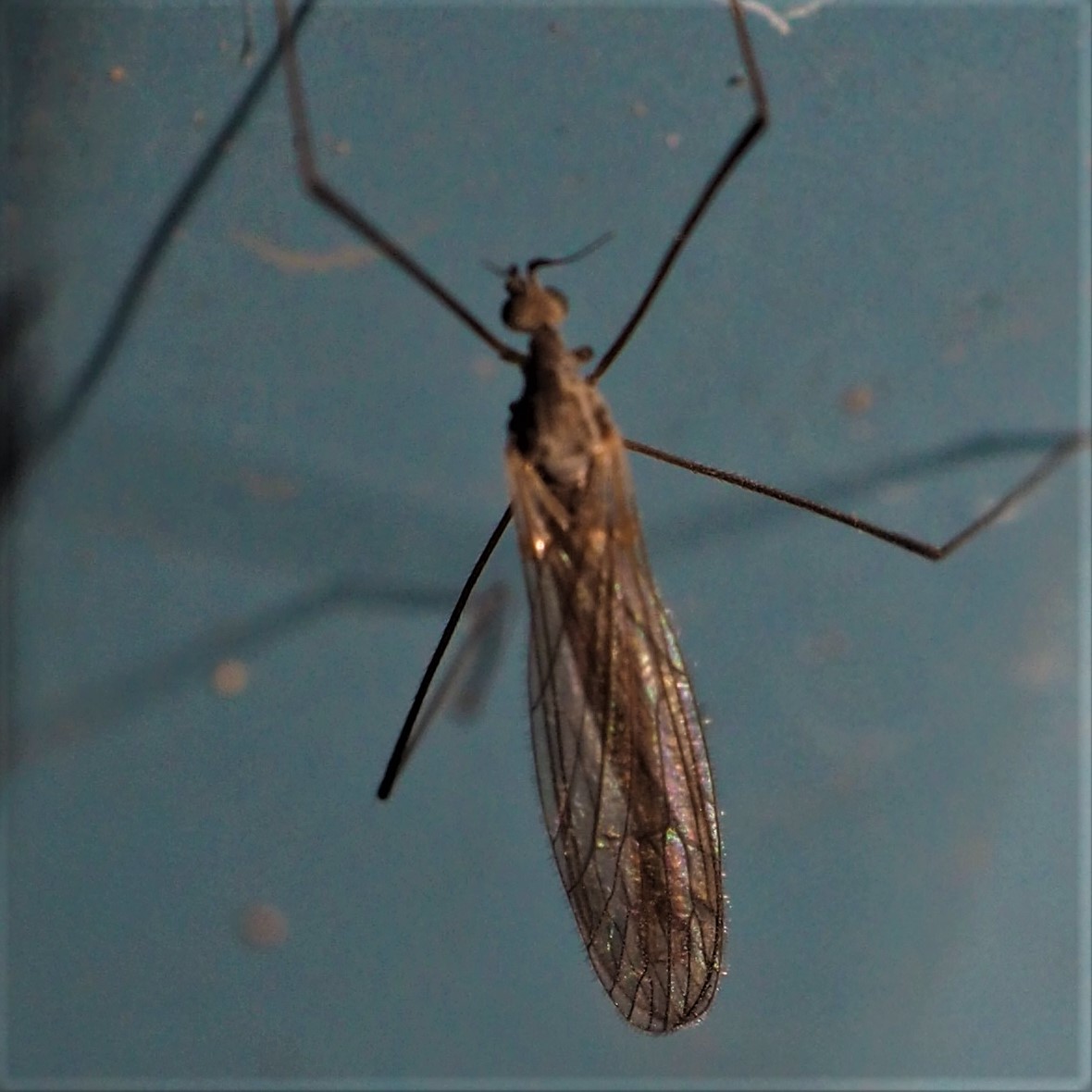
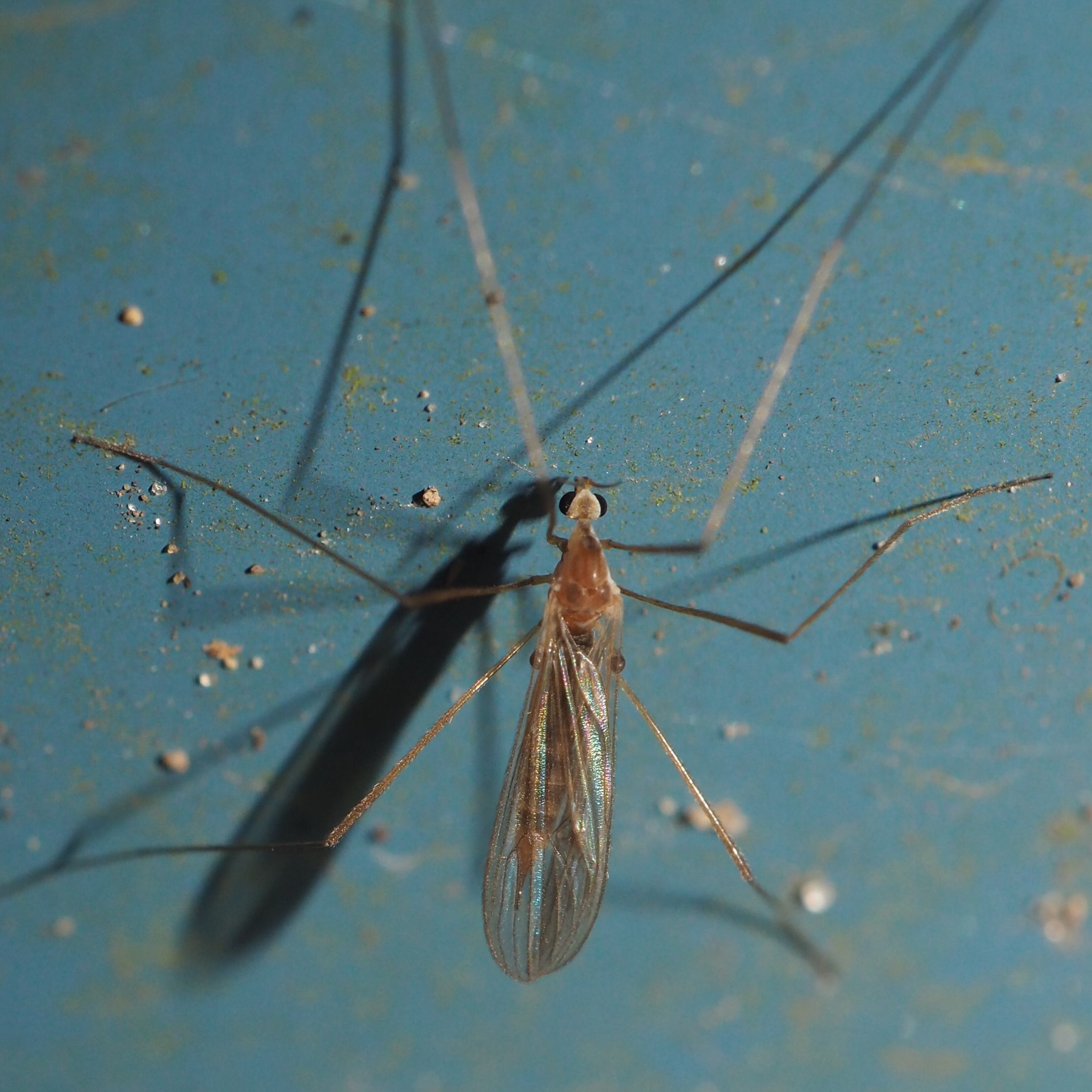
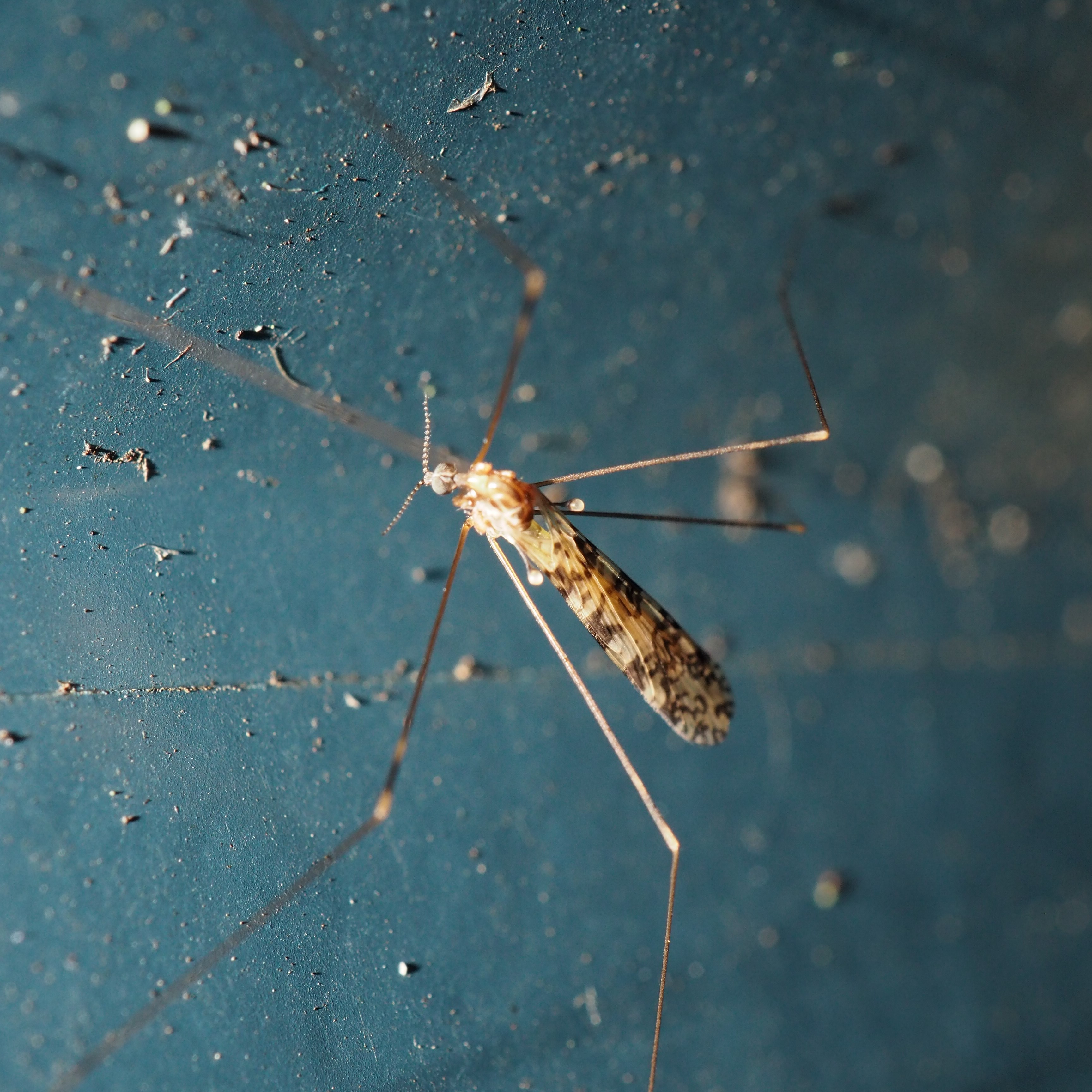
Here is a beautiful Compost Fly. Now we have some Hover Flies. This first one (picture 2) is a Common Flower Fly (genus Syrphus). Last is the Thick-legged Hover Fly.
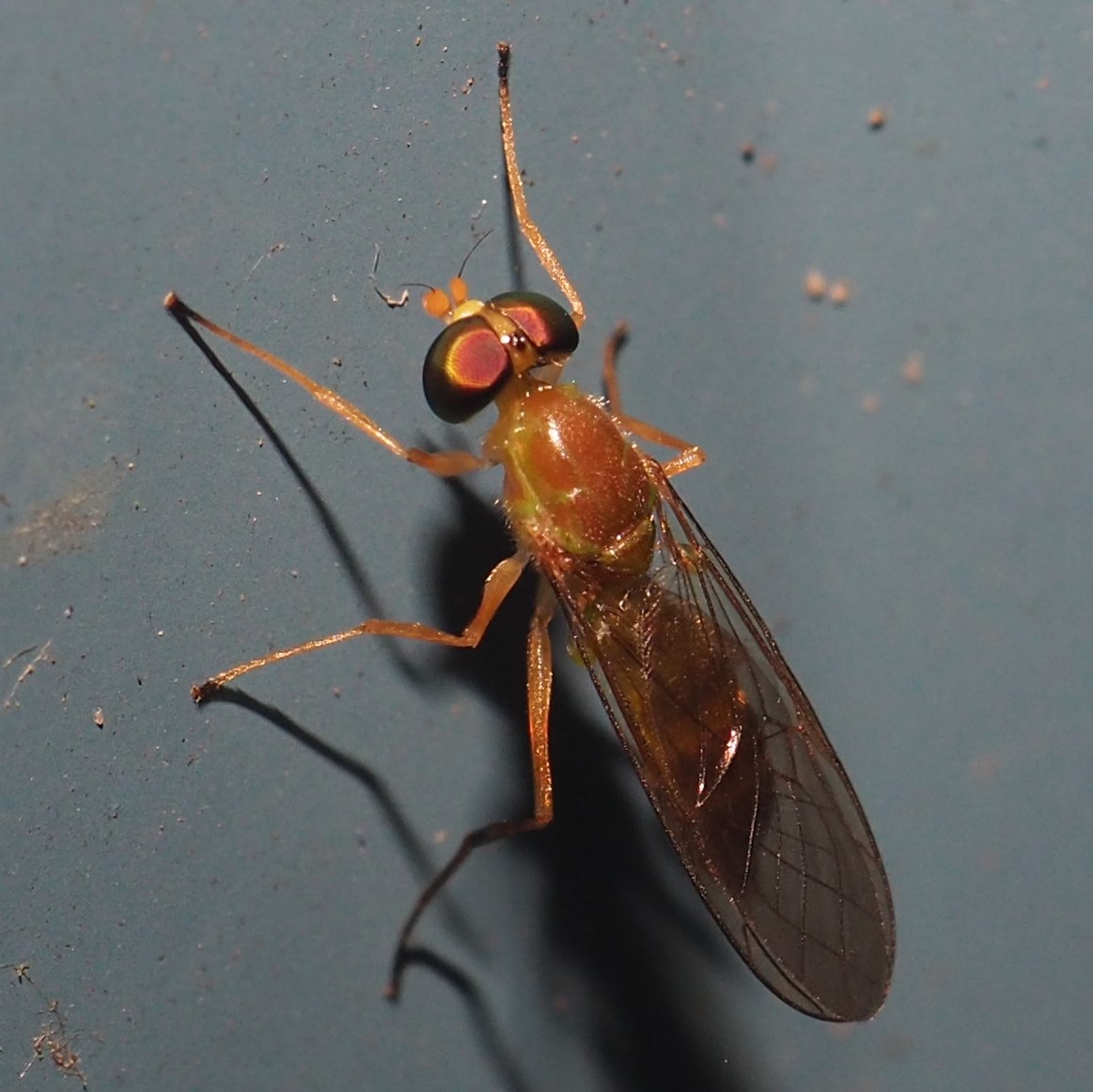


Next is one of the prettiest Hover Flies. It's called Allograpta obliqua. I like the first picture because you can see it seeming to hover still in the air.

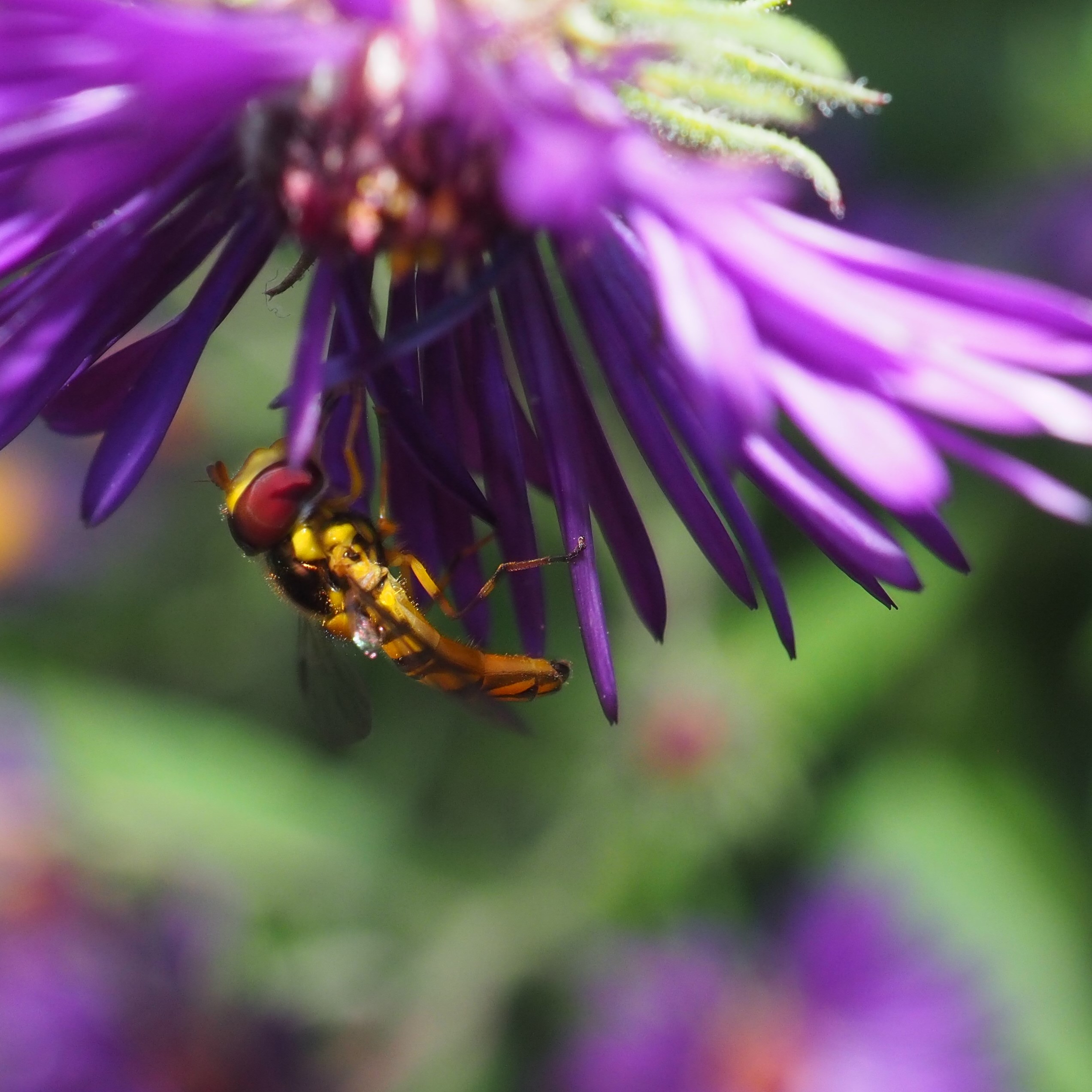
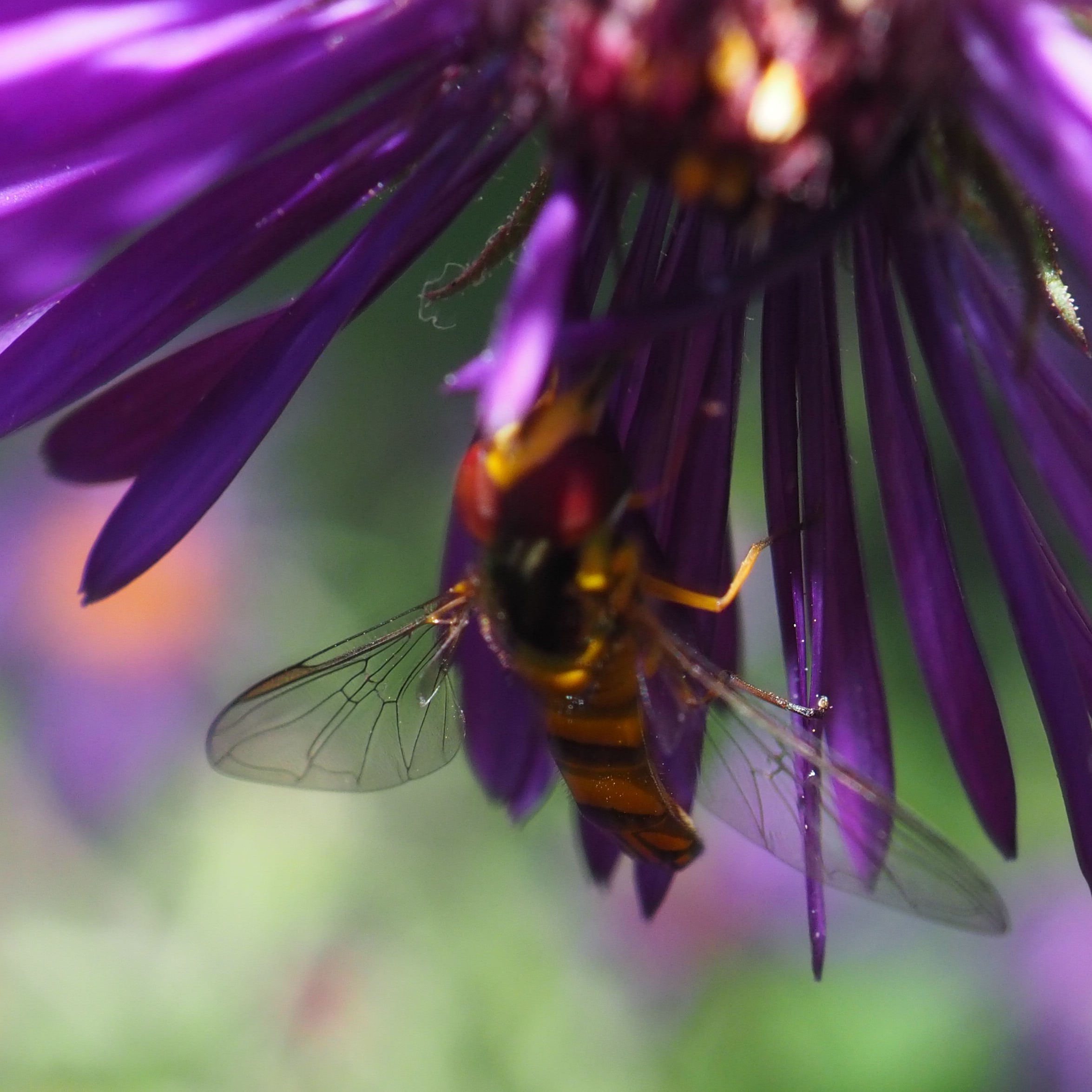
We saw a new Mosquito (first time this year at least) the other day. It's called Anopheles punctipennis (spotty wings). Next is the Asian Bush Mosquito. And third is probably the Eastern Treehole Mosquito.
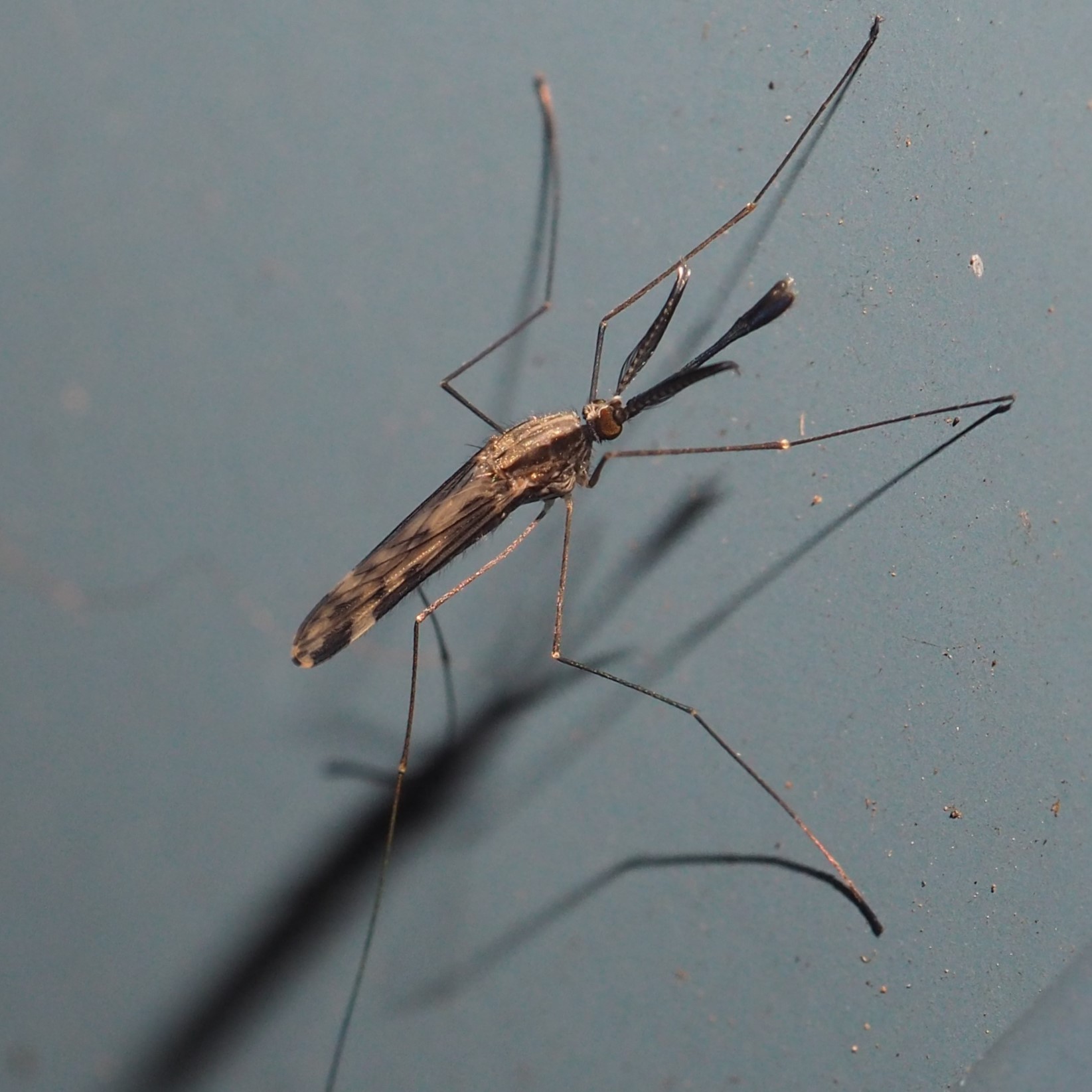
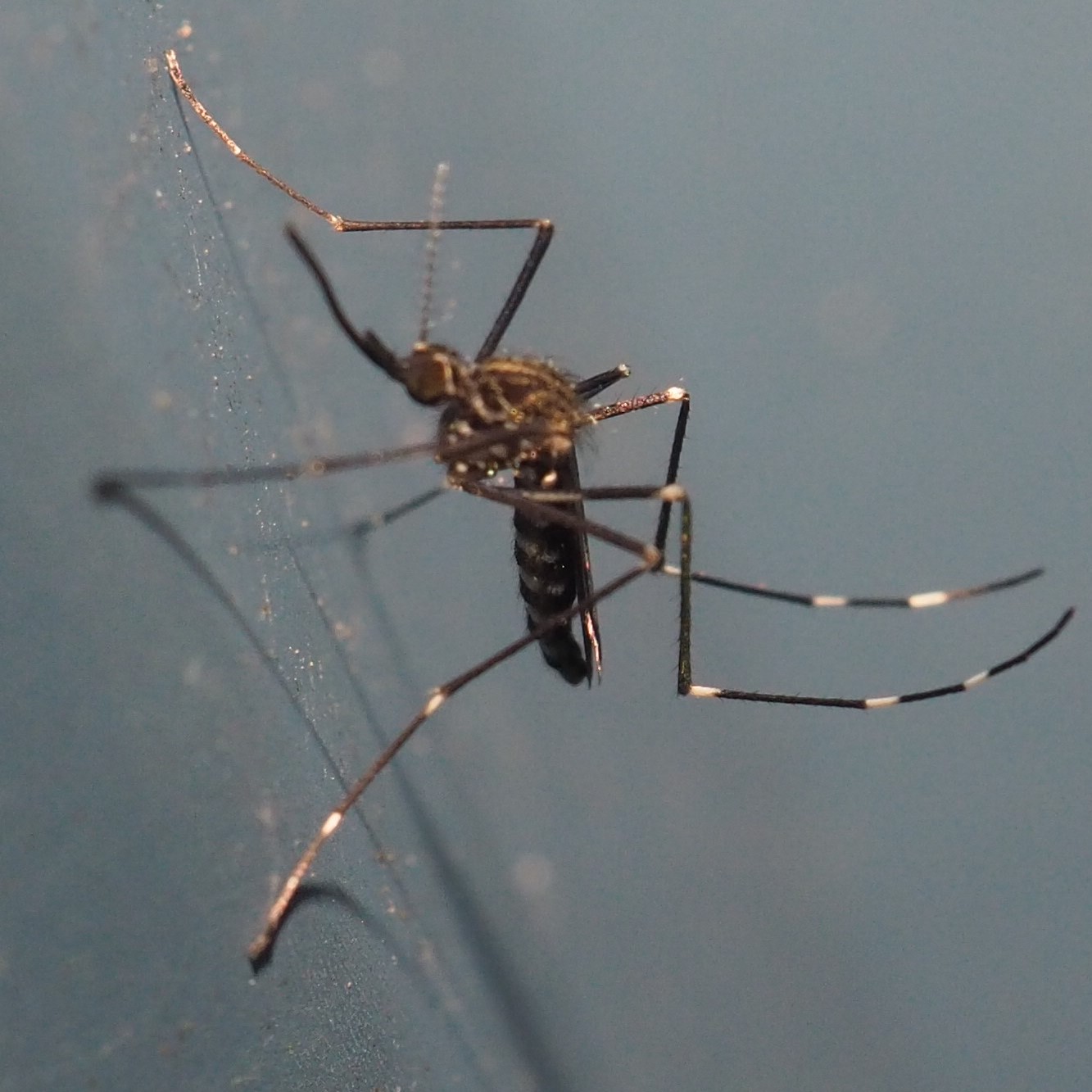
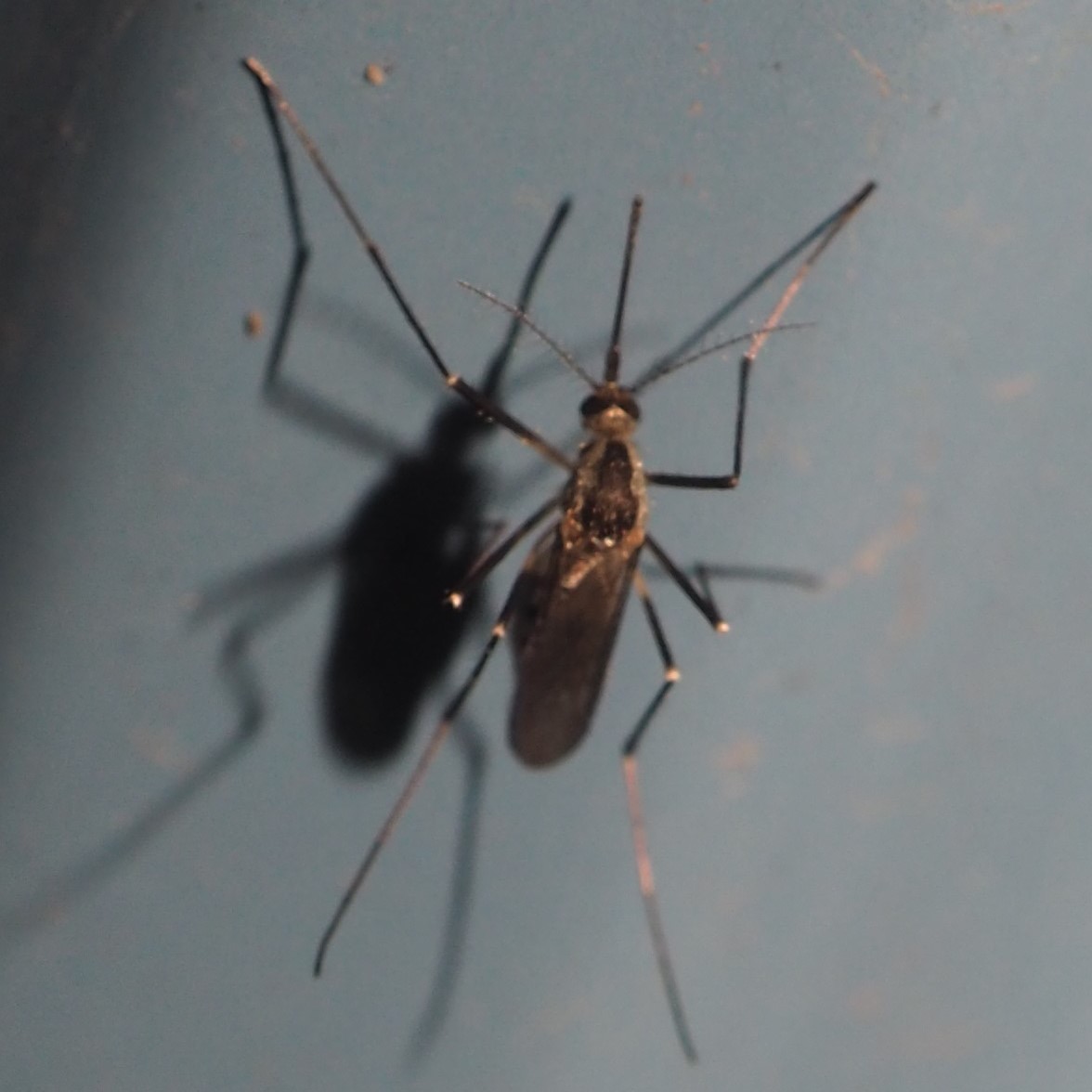
Here's a Bathroom Moth Fly; a Mystery Fly; and third, the new Fly we learned about last week. I thought the identifier must have found the picture on Bugguide.net but apparently BG doesn't have any photos either. So he must have identified it from a specimen. Brian Brown told me he had been studying these Flies for 30 years!
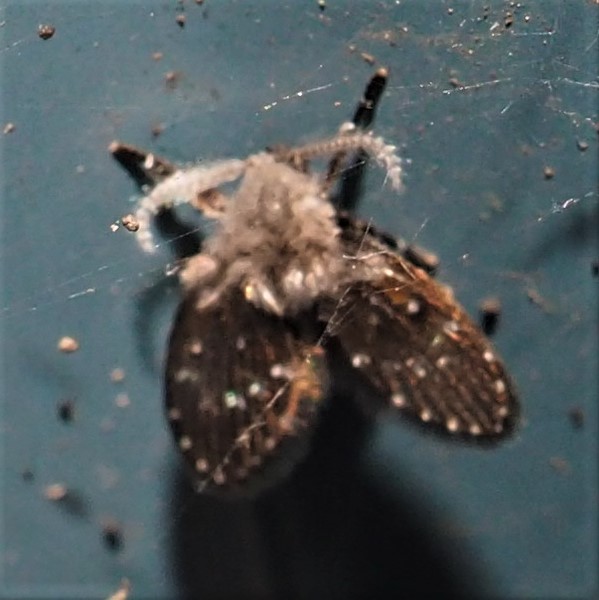
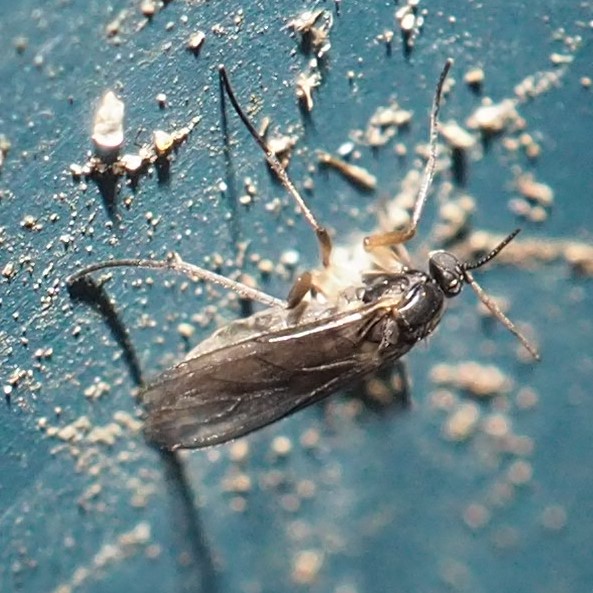
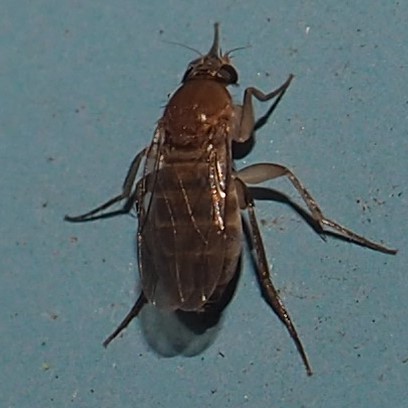
That was all the Flies I saw this week. But I walked in on a scene I'd never visited before. I don't know how I managed to see it. I was staring at this Redbud tree and thinking it needs pruning when suddenly I saw that this female Chinese Mantis had performed one of the traditional mating rituals - note her mate's lack of a head! In picture 3, she seems to be staring at me and hissing something like "This is NOYB".
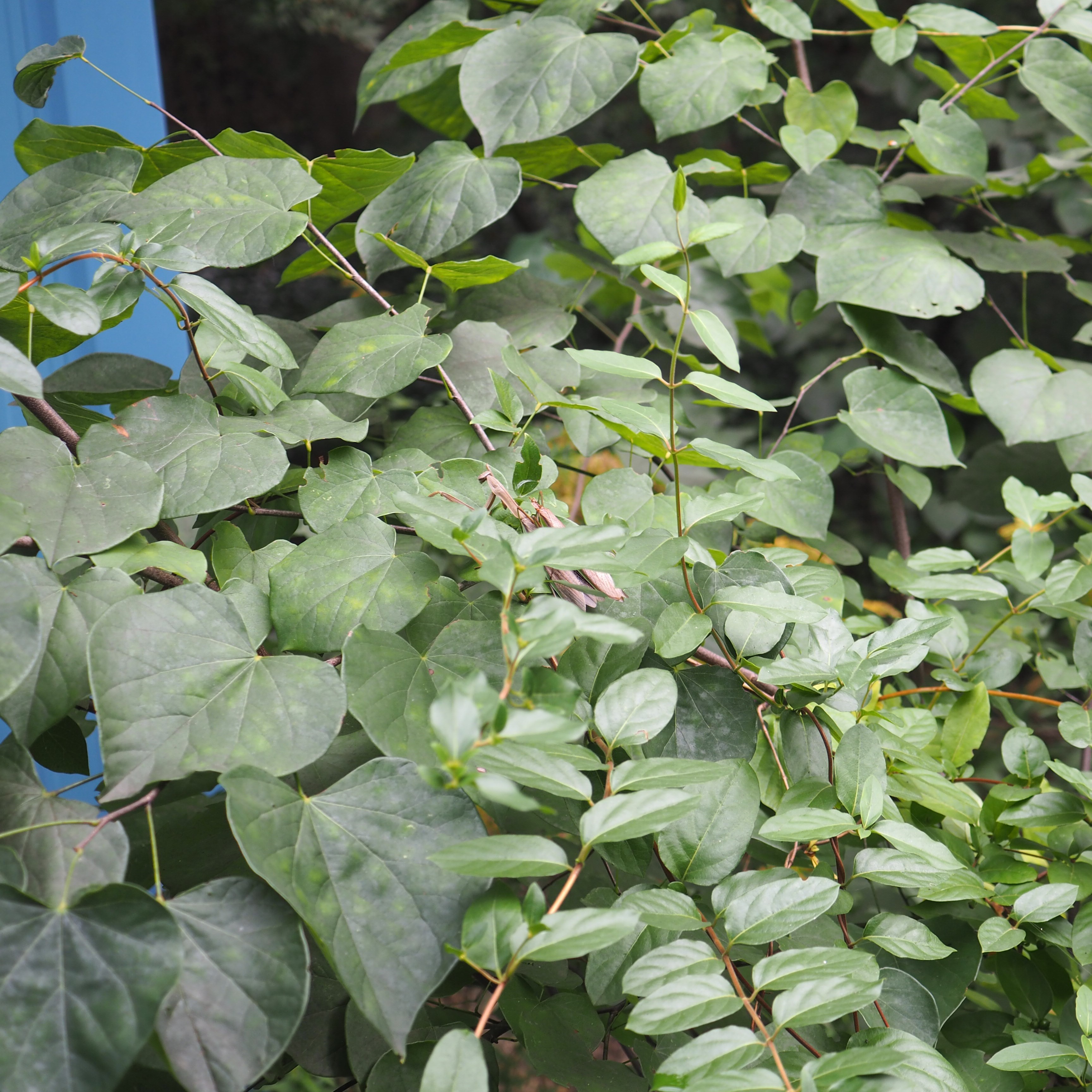
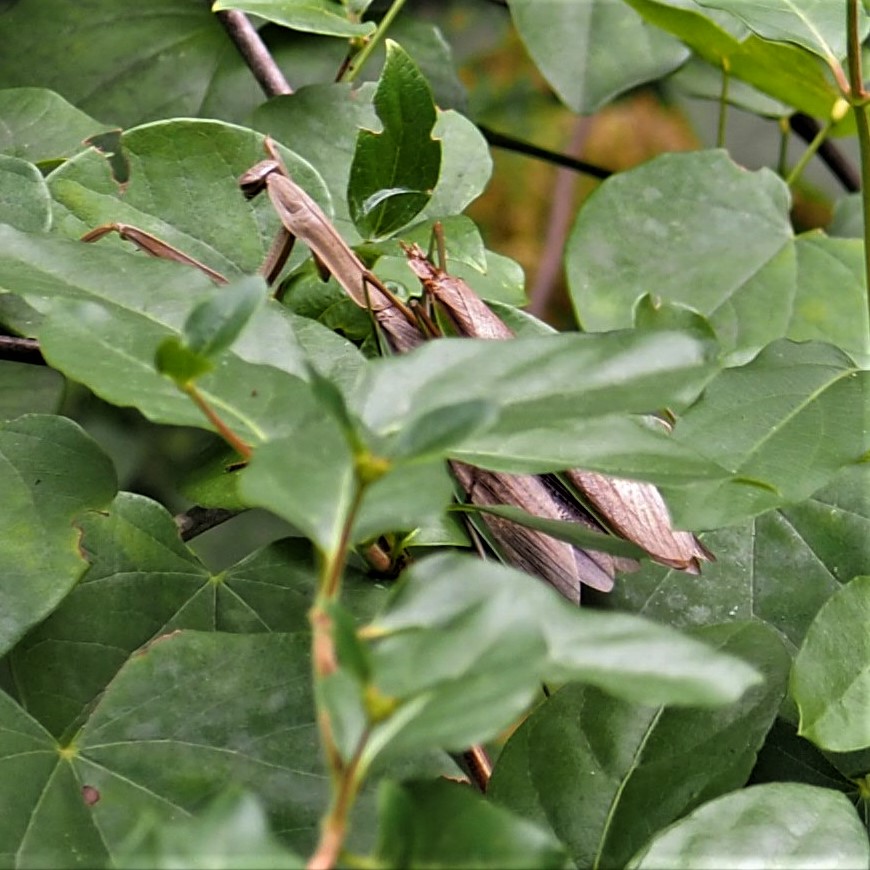

Here we see a Mystery Moth. But picture 2 shows a Butterfly you will probably recognize - it's a Cabbage White Butterfly.

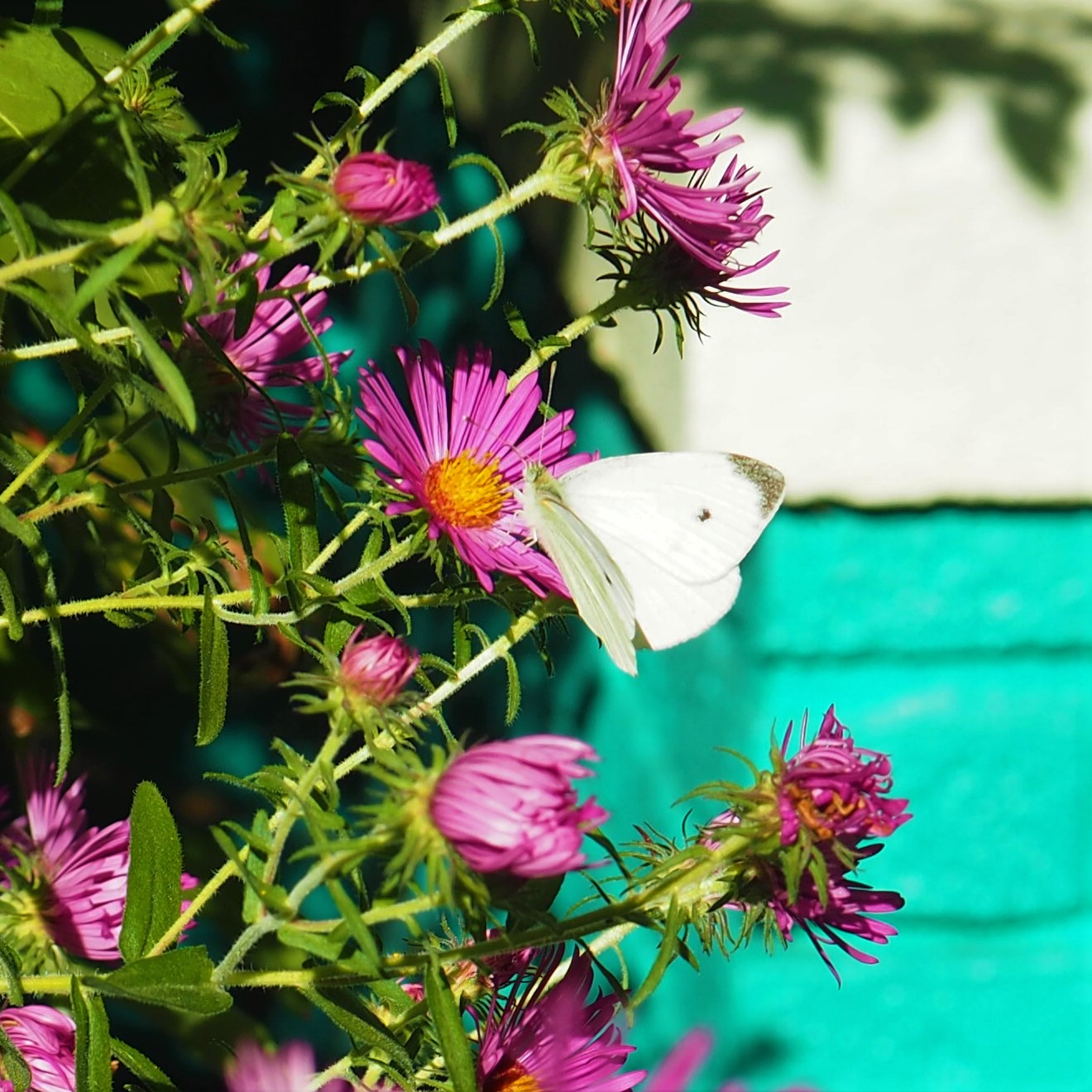
This is where we normally go walking to see all the Flowers. But it's the end of September, and it feels like a whole new season. That rain tried to melt the Fall Phlox, not understanding the word Fall, I suppose. Yesterday the individual blossoms really seemed to have melted. You can see, though, that there are still lots of buds - let's hope we get to see them bloom! The Goldenrod really is golden in smaller and smaller areas. The Drymus unus Seed Bugs are back and mating or hoping to mate.



Yes, the Colchicum Crocus-wanna-be's are up and blooming. I purchased them several times before they decided to give up and LIKE my yard. So you can see at least three species in these photos. Picture 1 was taken in the Back Yard. Second is from the Front Yard, and with its MANY many separate petals you can see it is taking its name "Water lily" or "Waterfall" seriously. The Third has Striped petals. People hardly ever notice these subtle bloomers, but I admire them much for their persistence and diversity. Some years the Saffron Crocuses bloom, but I haven't seen one this year. There was only one last year.
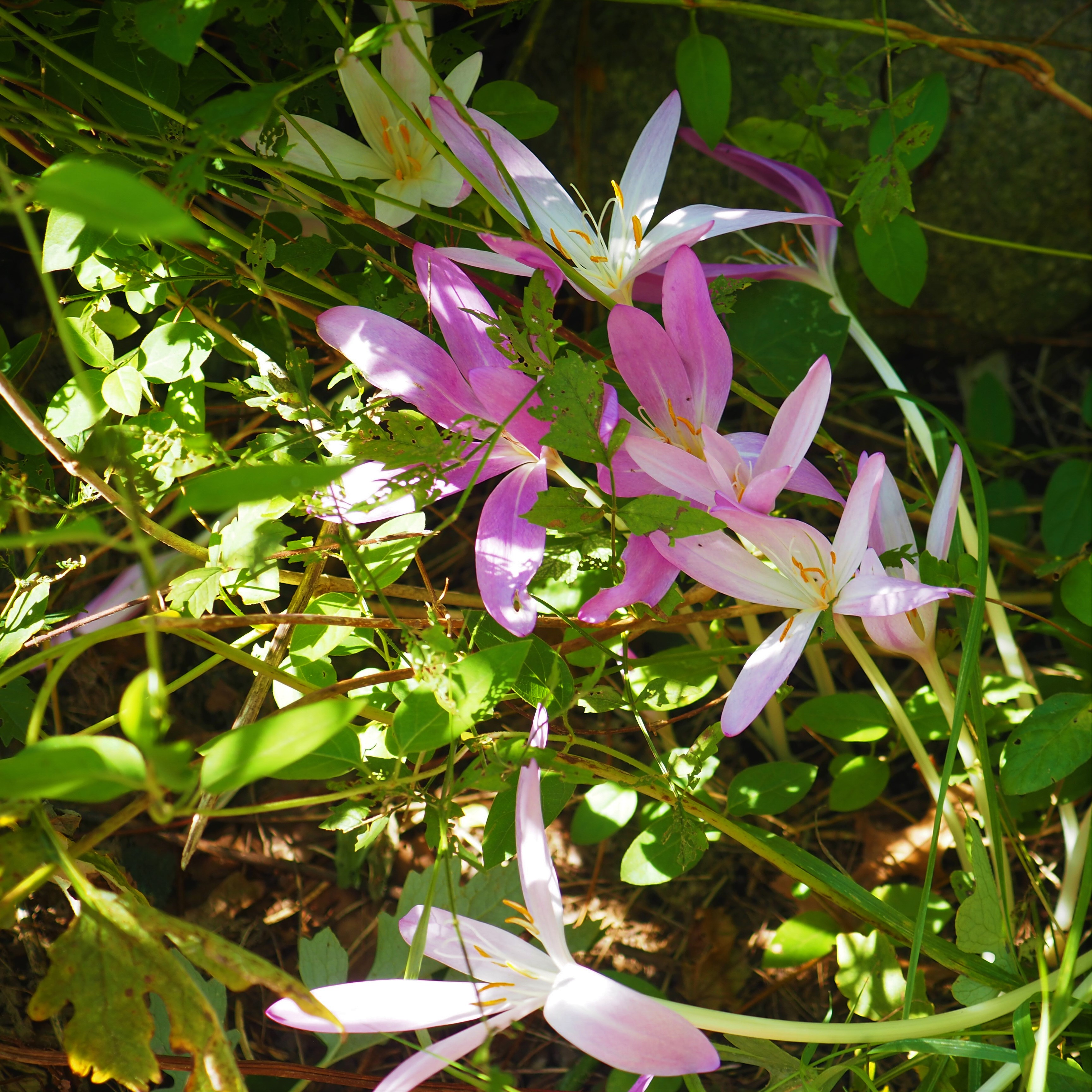
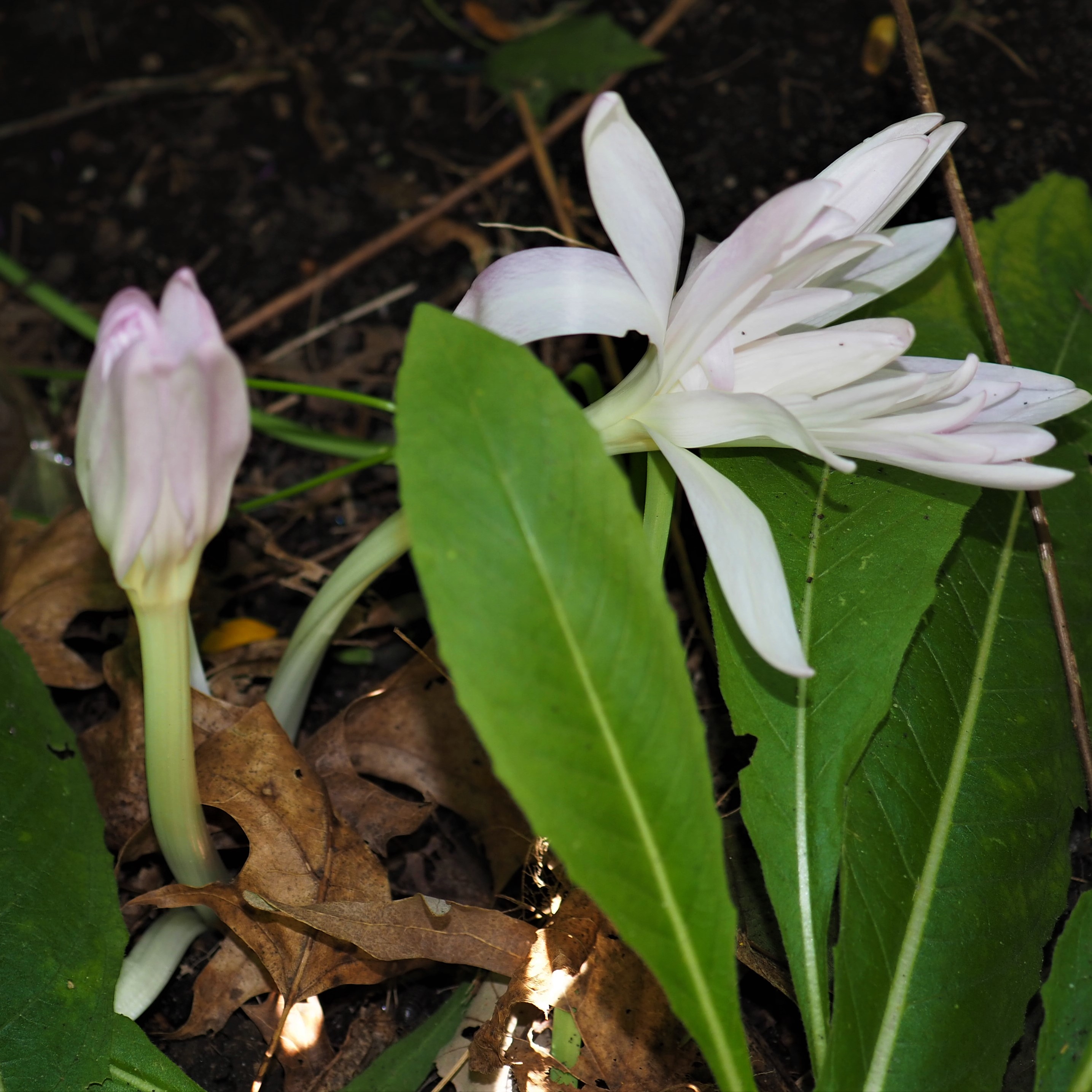

Well, we are just about down to the Asters, which I've never seen so prolific and gorgeous. The several colors are shades and mixings of pink and purple. They have been blooming in such profusion that I can only try to get some combination photos. One of my iNat friends, @mobbini of Leipzig, says that the pictures almost look 3-D. This first one is my favorite so far.

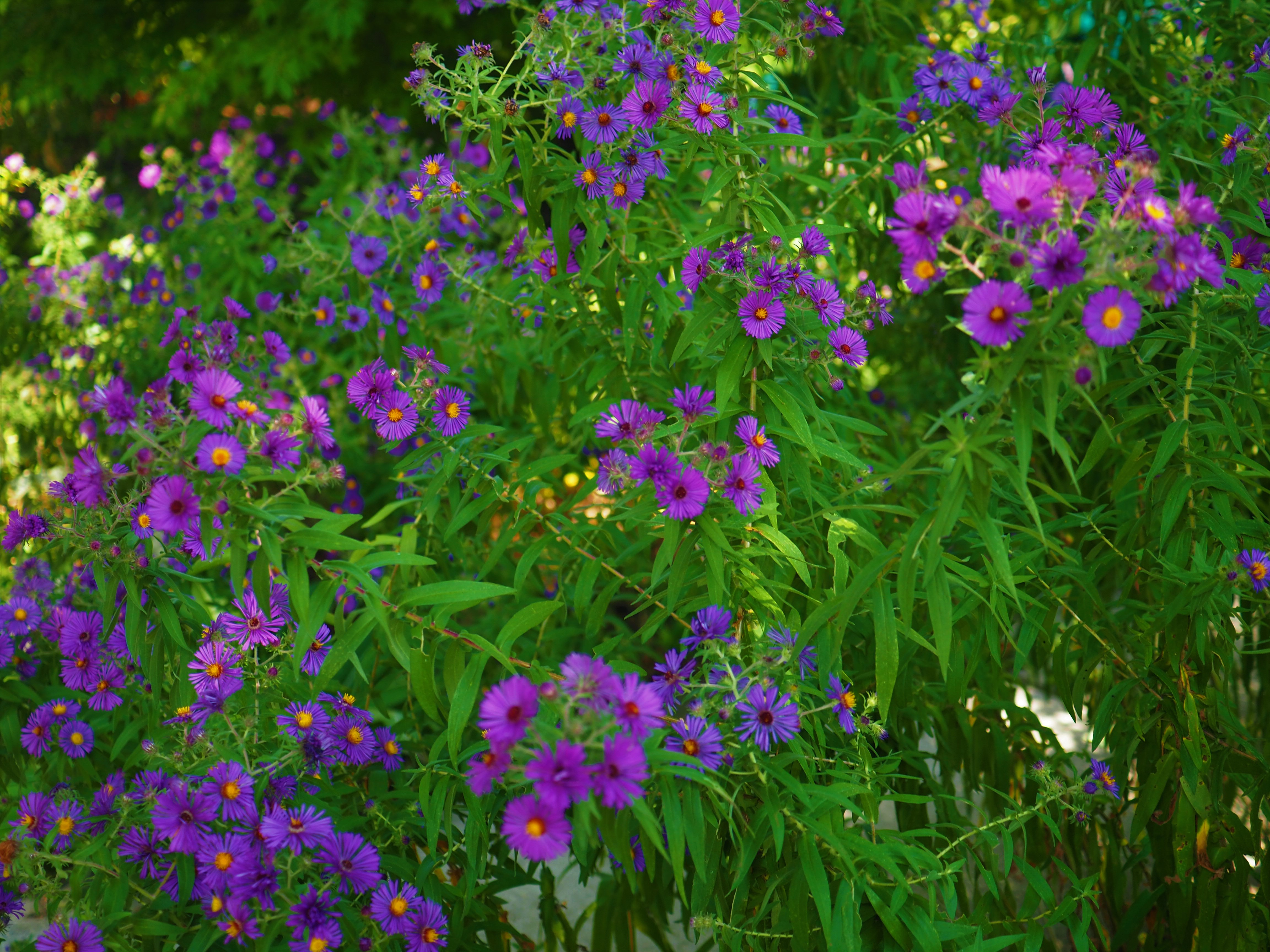
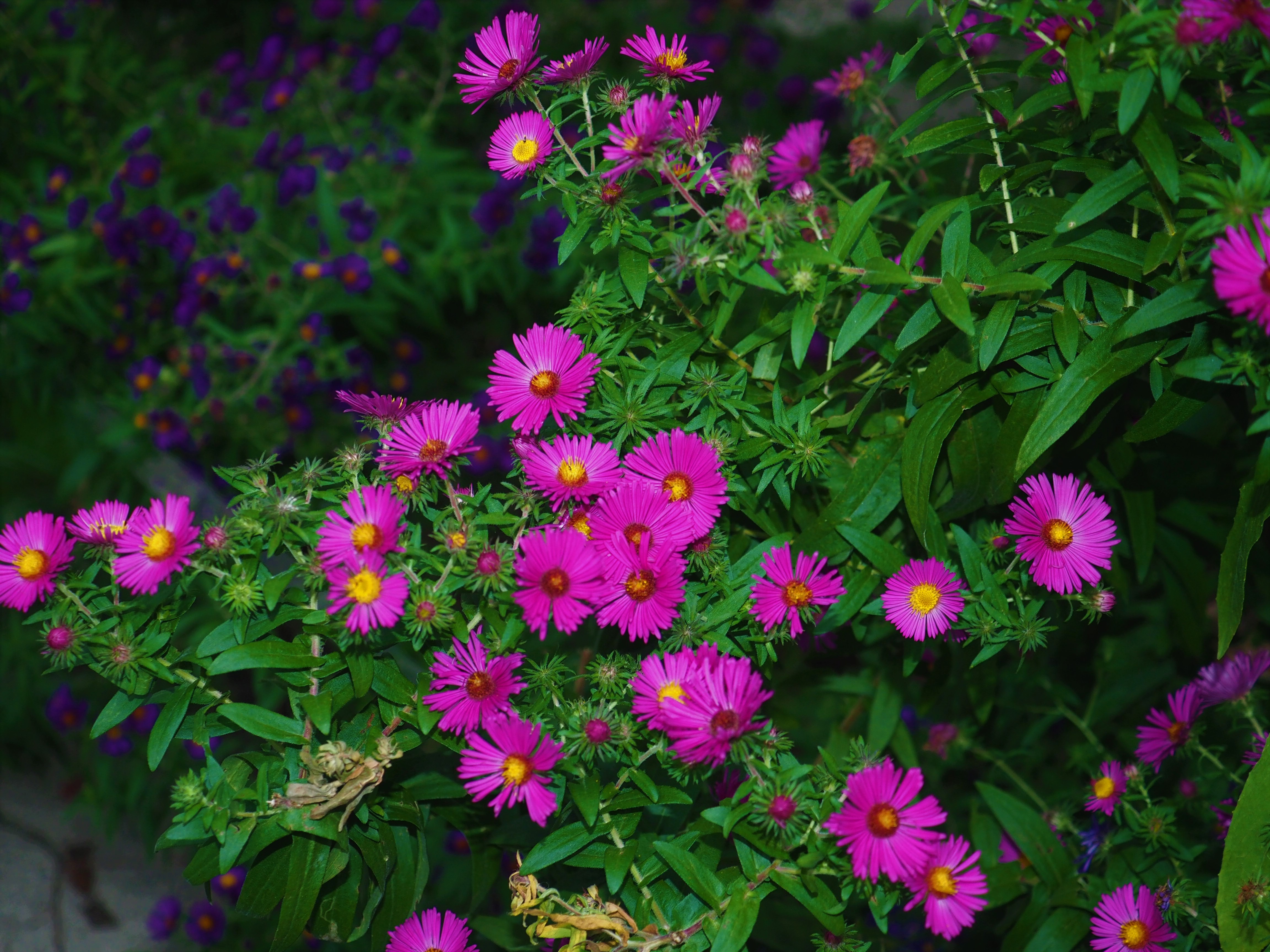
The Fleabane that blooms along the Wall is in new bloom. Here you pass it as you come around the north-west corner of the Wall. The "Firebush" or Euonymus has a reddening leaf here and there but we must wait another couple of weeks to see it glow... Same for the Maple trees out front. Maybe now is the time to look at the plants in the Pond. I planted Water Lilies in June and again in July. Here in picture 2 you can see the result of their hard work and my encouragement - these are the Water Lily leaves and, interspersed with the Lily leaves, the Water Lettuces that split off the three little plants I put in at about the same time. Can you see any Water Lilies? Well, no. The three plants did an amazing job of surviving and growing to THIS size. I'm hoping that the bare roots that I planted will have enough vigor to pass the winter and produce blooms NEXT year. Who said Nature was fast?
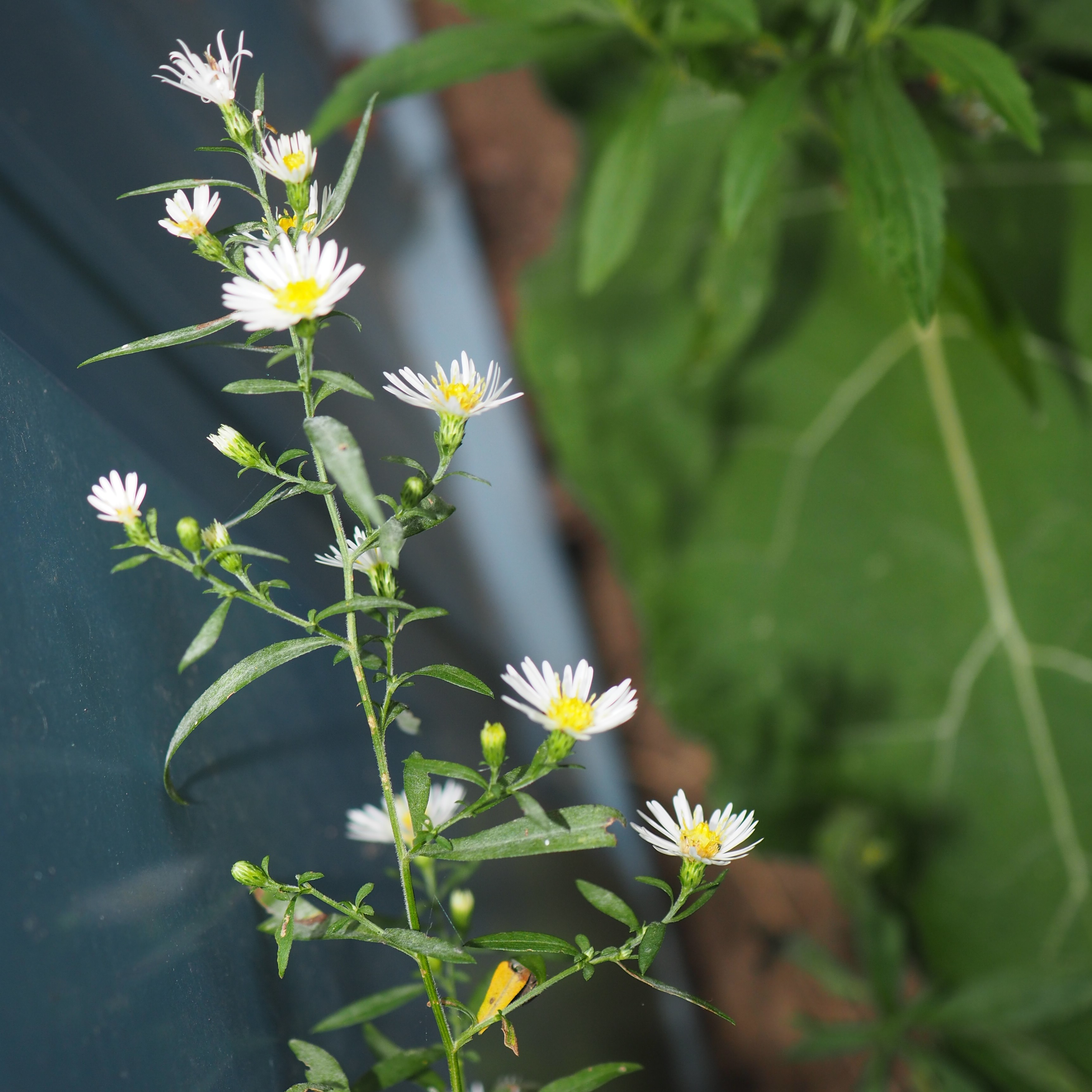
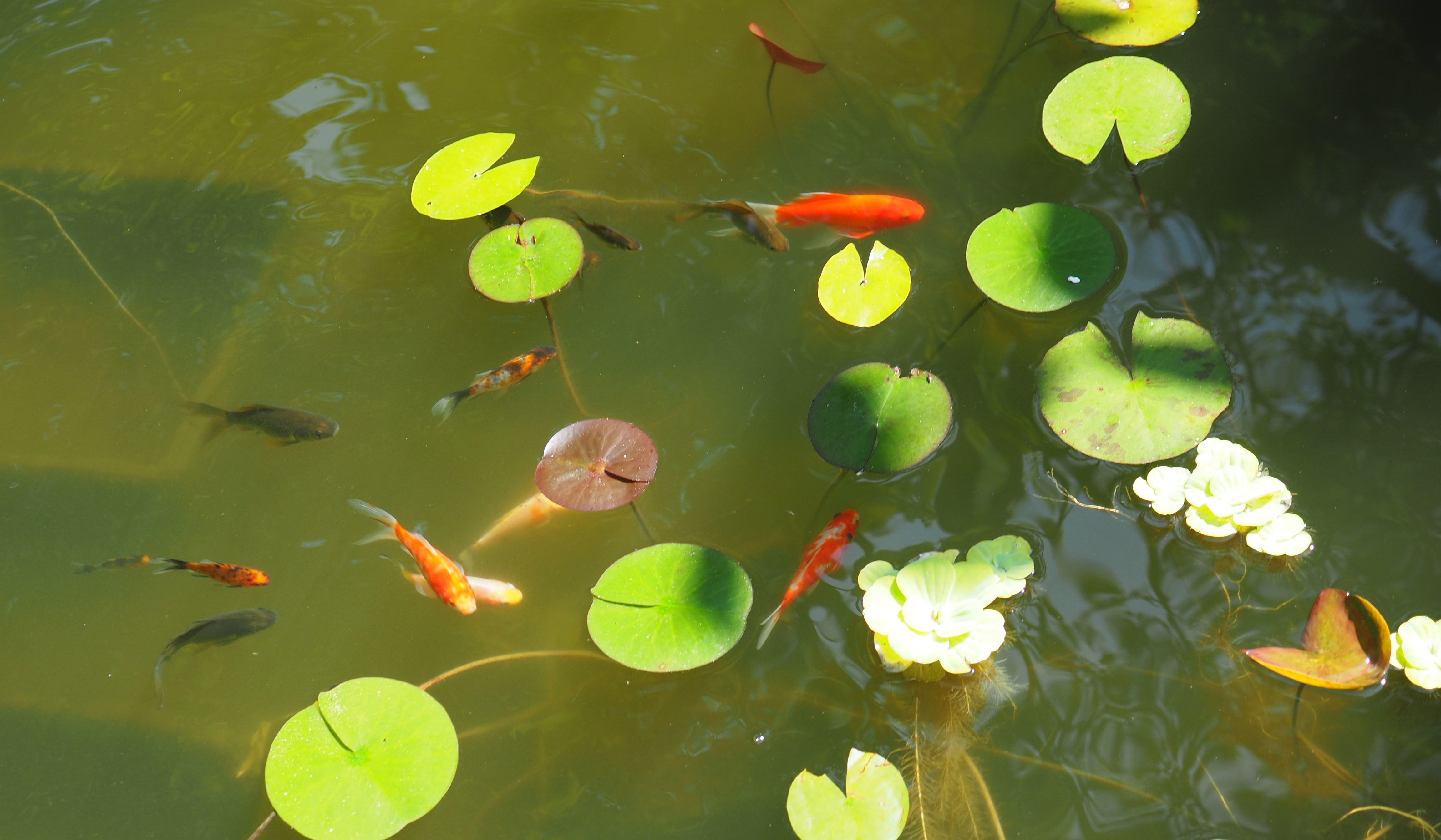
Sometime in July I tried again, and planted 4 Water Lilies. Of these, all their corms, which had a hard time staying connected to the bottom of the pond, died, except for ONE. This week, after much encouragement from me, a leaf finally reached the water's surface (picture 1) three days ago. This leaf is about an inch across. But if you strain your eyes you can just see some little stuff at the bottom of the pot, which might
just be other leaves waiting to get the go-ahead. So I took one of those pictures and played with the light and contrast over and over to get picture 2. We can now see four or five little leaves, some of which are already trying to get their little stems to take them surface-ward. Maybe by the end of October, when I will probably have already placed a small floating heater into the water, those leaves will have reached the top and hopefully have sent some energy to the tiny plant.
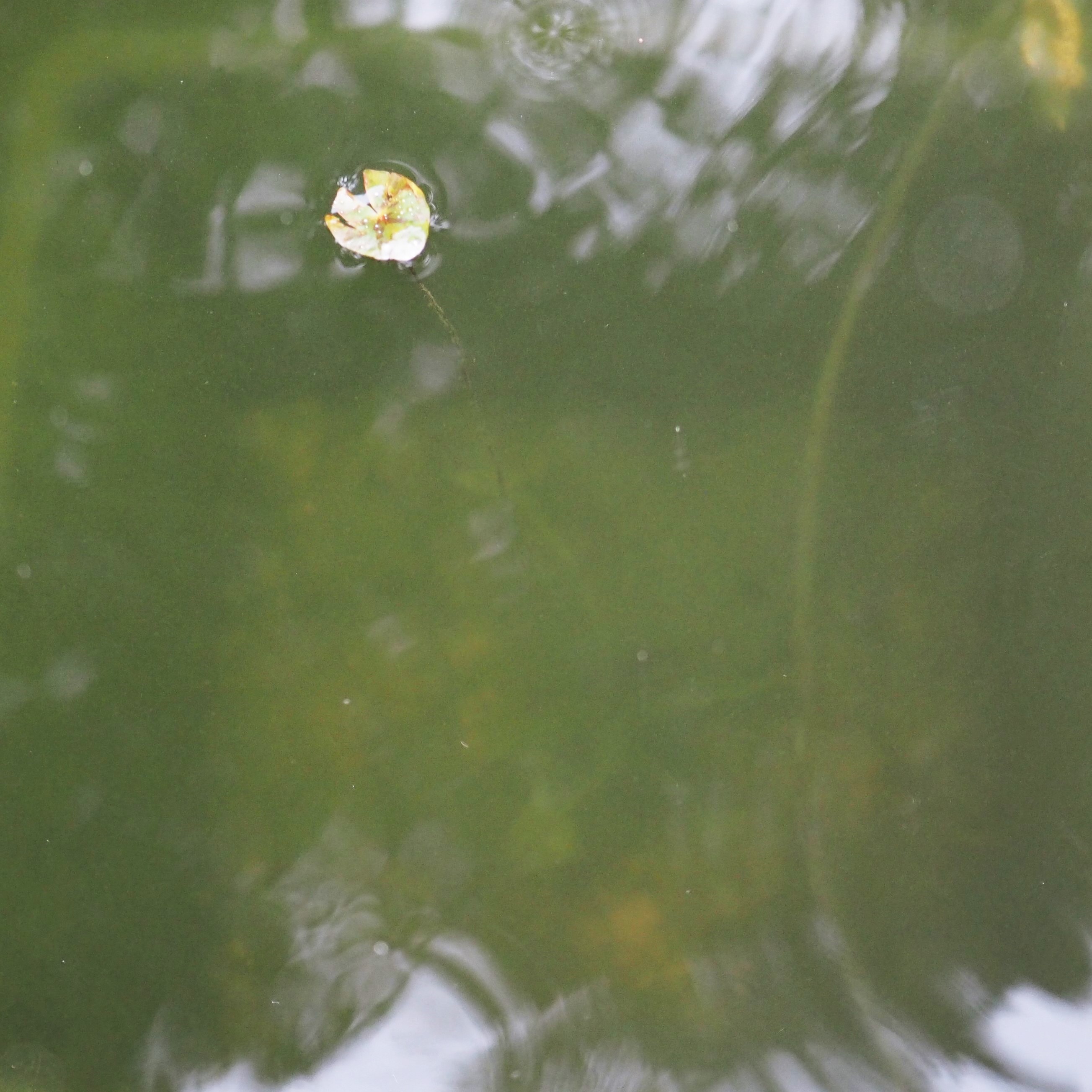
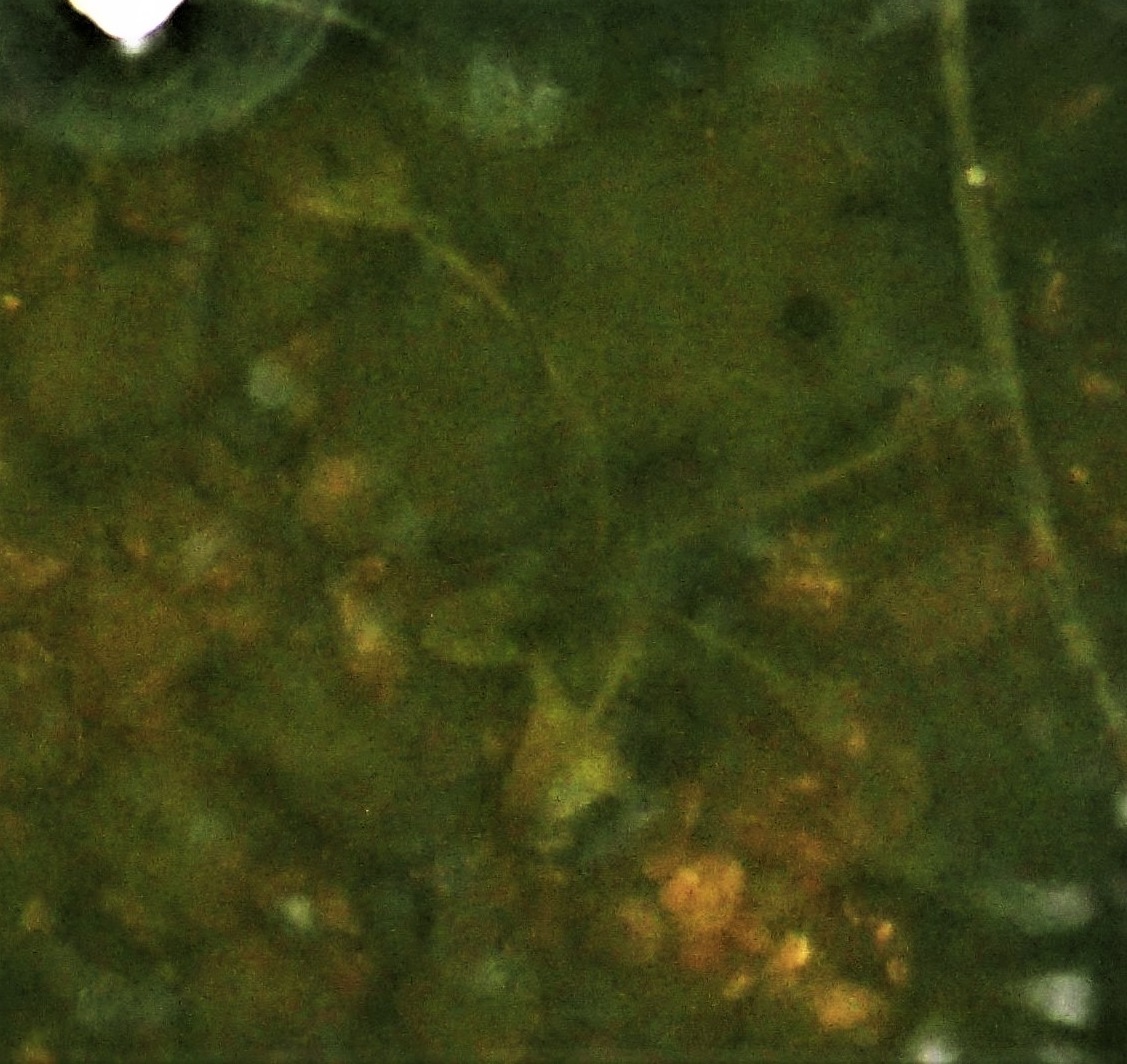
The Frogs don't like it cold. Last week I could almost count on seeing all three Frogs when I went out to sit by the Pond. In the first picture, you can see Frog One (the green on his face seems to have grown) and Frog Two sitting on an old barley bale and trying not to think about the big Fish Pebbles who is treading water right next to them. Second is Frog Two. And last is Frog Three - the youngest, who still has yellow lips.
 and 2 with fish 9 24 21 1.jpg)
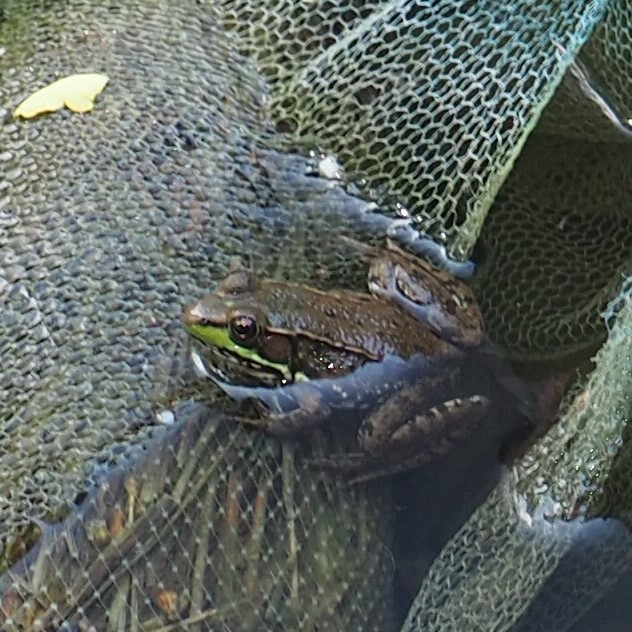
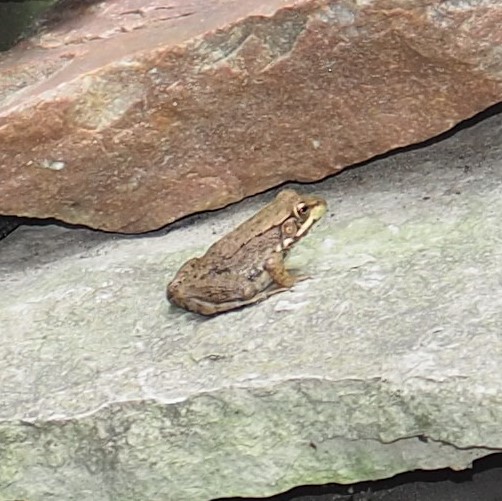
Let's see what we have in the way of Spiders. I must say, I spent more time watching the Barklice than Spiders. In fact, I've begun to distrust Spiders that seem to be too close to the nymphs and might possibly develop a taste for them, even though I've NEVER seen one Spider actually attack one of the babies. So here is a Cellar Spider. Although we still have our fill of Cobweb Spiders, most of them seem to be Common House Spiders, like number 2, which seemed to be attacking a Beetle. But then I saw it again attacking what appears to be the egg case of another Spider.
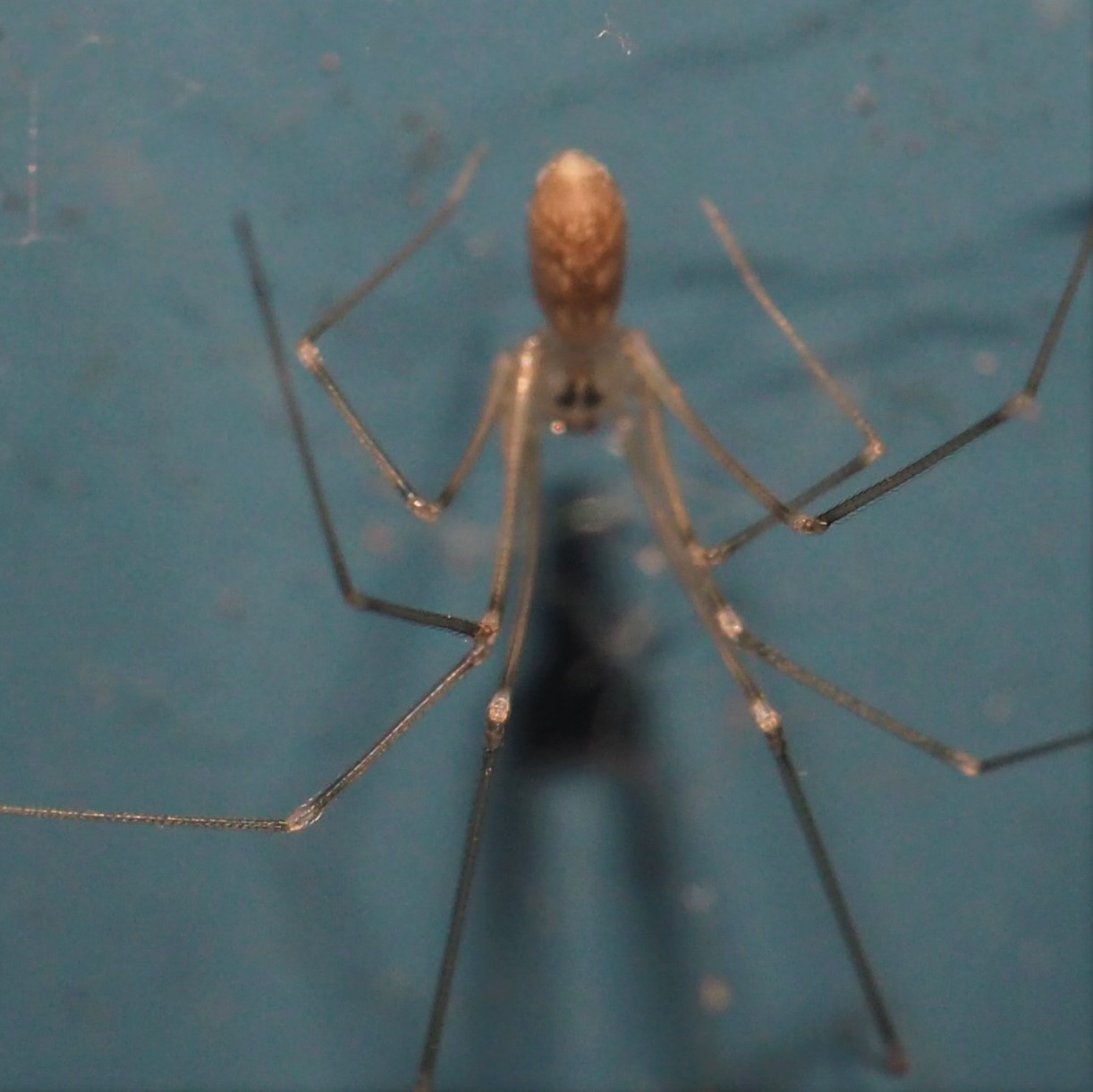


This is one or more Spiders that I thought at first were Wolf Spiders because of their floppy legs, but now I think they are actually big fat Grass Spiders.
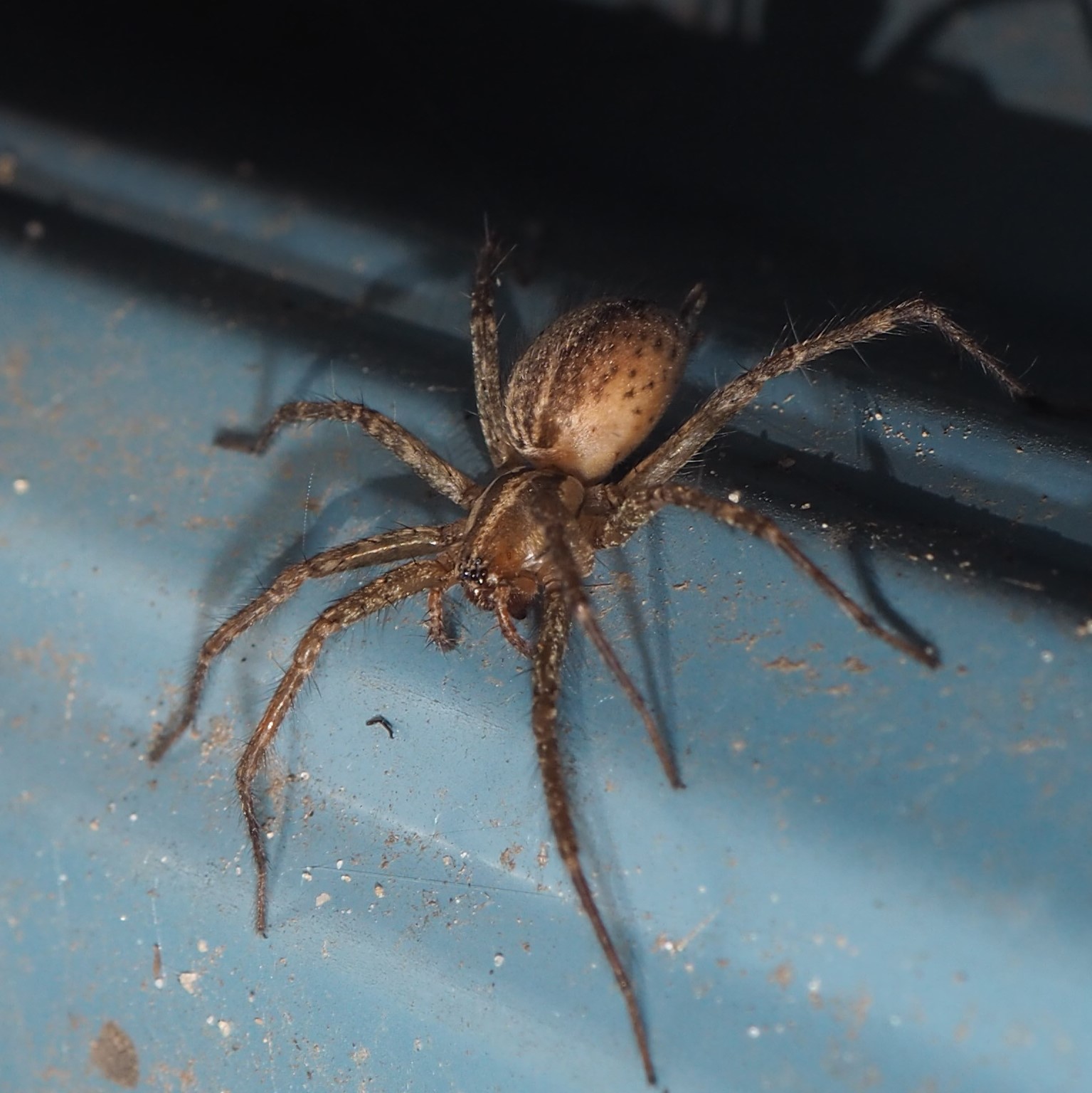

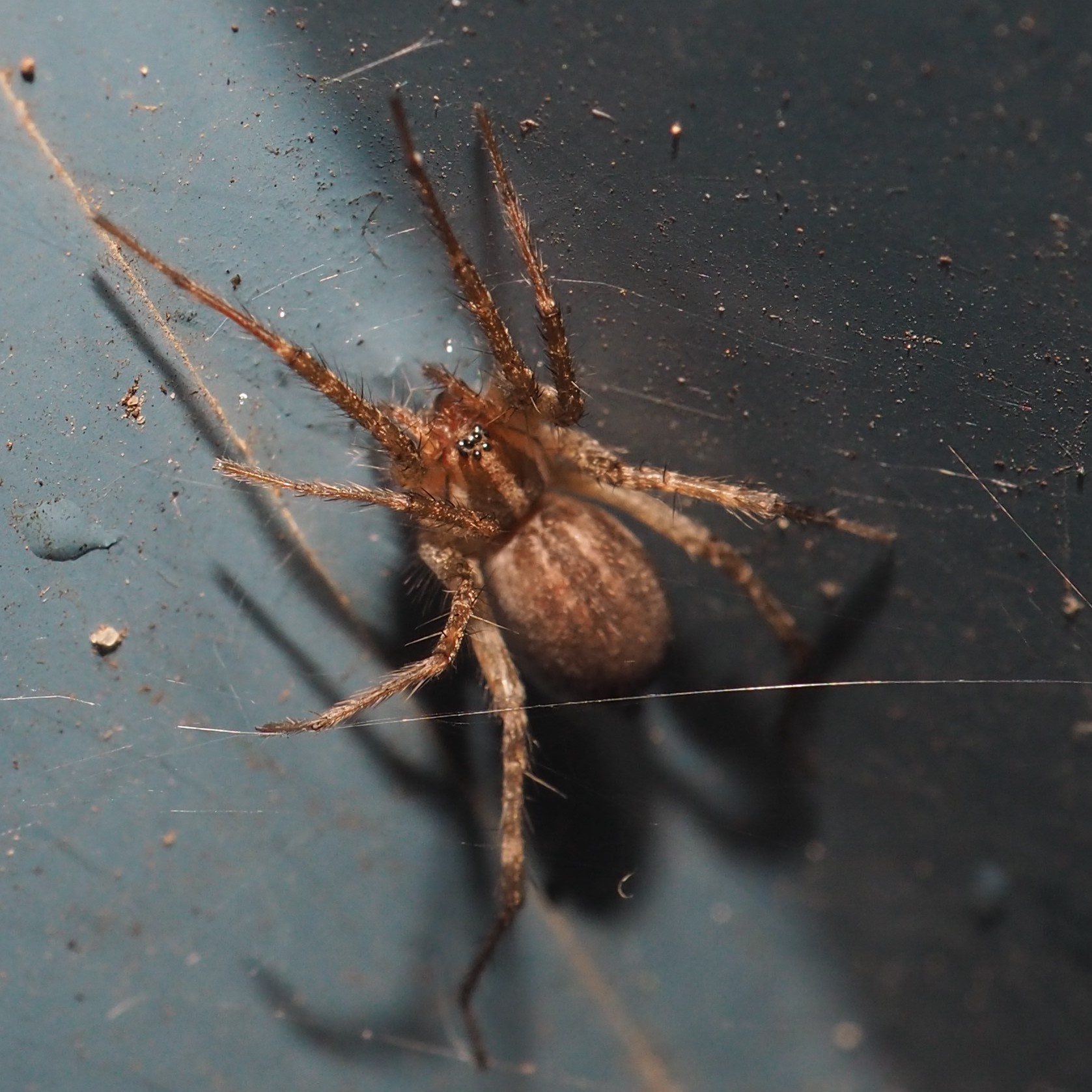
Remember all those little juvenile Pirate Spiders, which I've been thinking of all along as Mimetus puritanus? Pictures 1 and 2 are some of those. But here is picture 3, and this is definitely an adult Mimetus puritanus! Since seeing this picture, I haven't seen another candidate for adult M. puritanus!
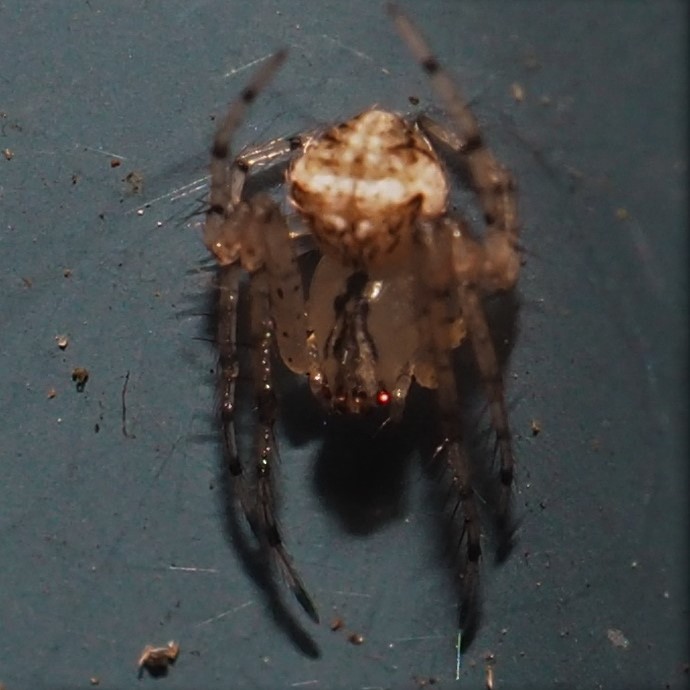
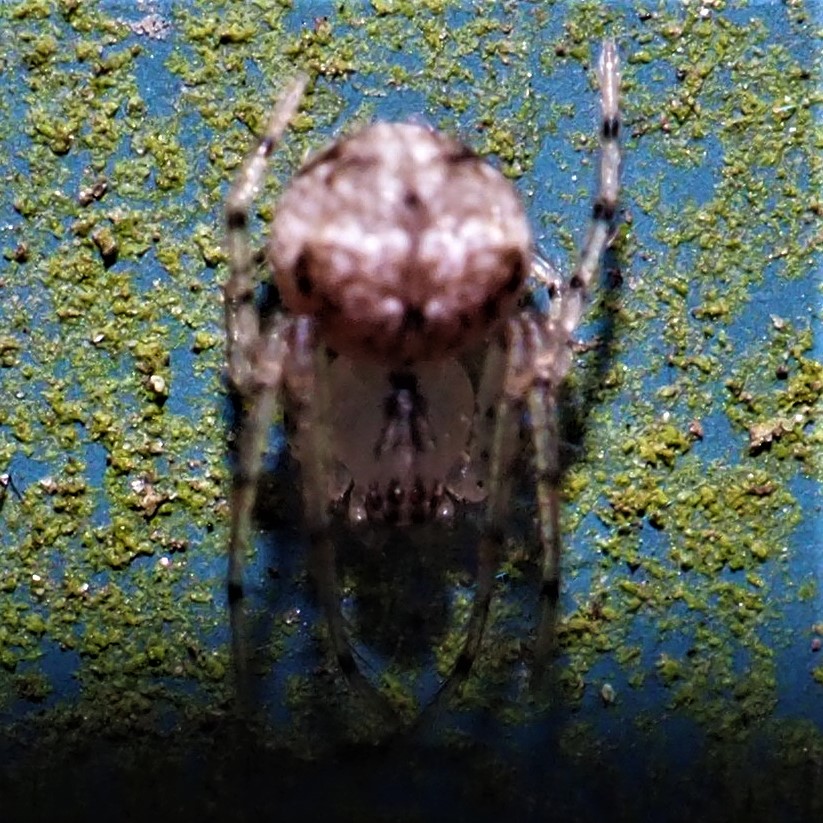

Here's a nice orange Cobwebber. I couldn't get any closer name than that, sorry.
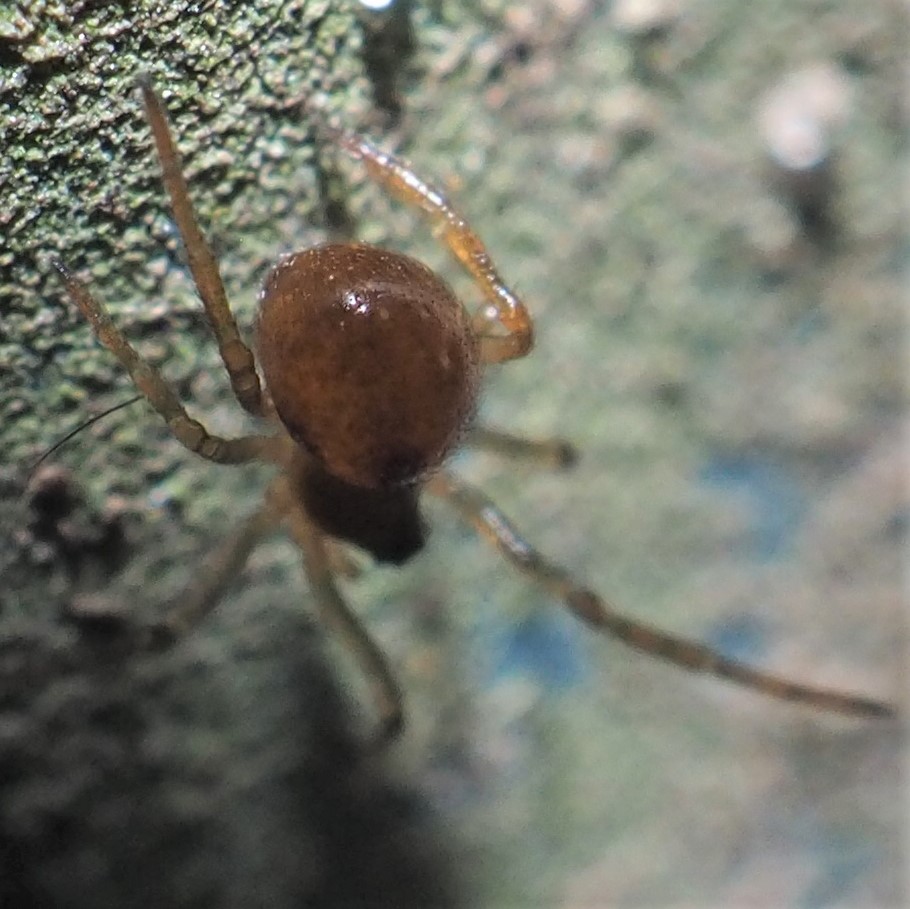
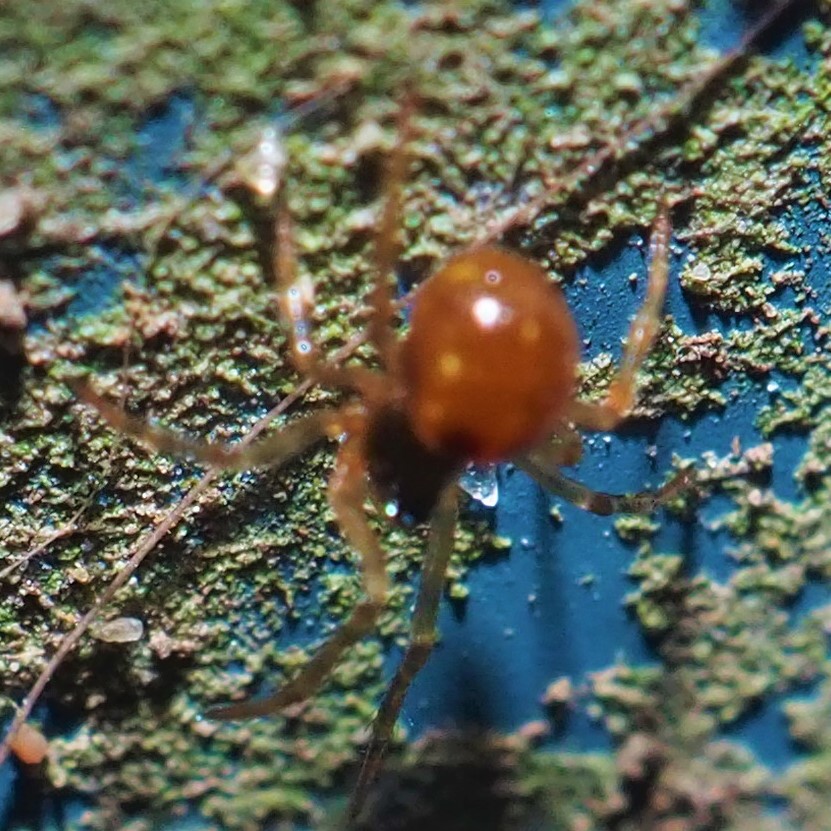
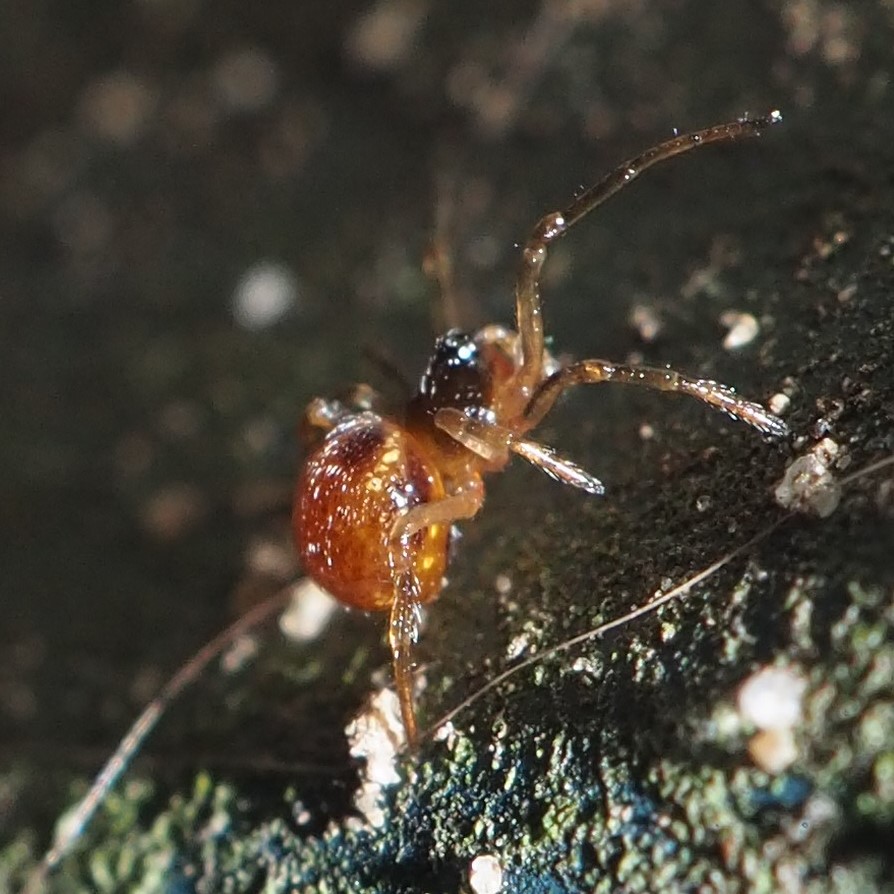
Here is an Ichneumonid Wasp of some kind who seems very much interested in this possible Spider egg case. Remember we've seen Wasp on Spider and Spider on Wasp violence. It is Ichneumonid (and female too) because of the evident ovipositor. Watch! The Wasp approaches the possible Spider egg case with a lot of interest.
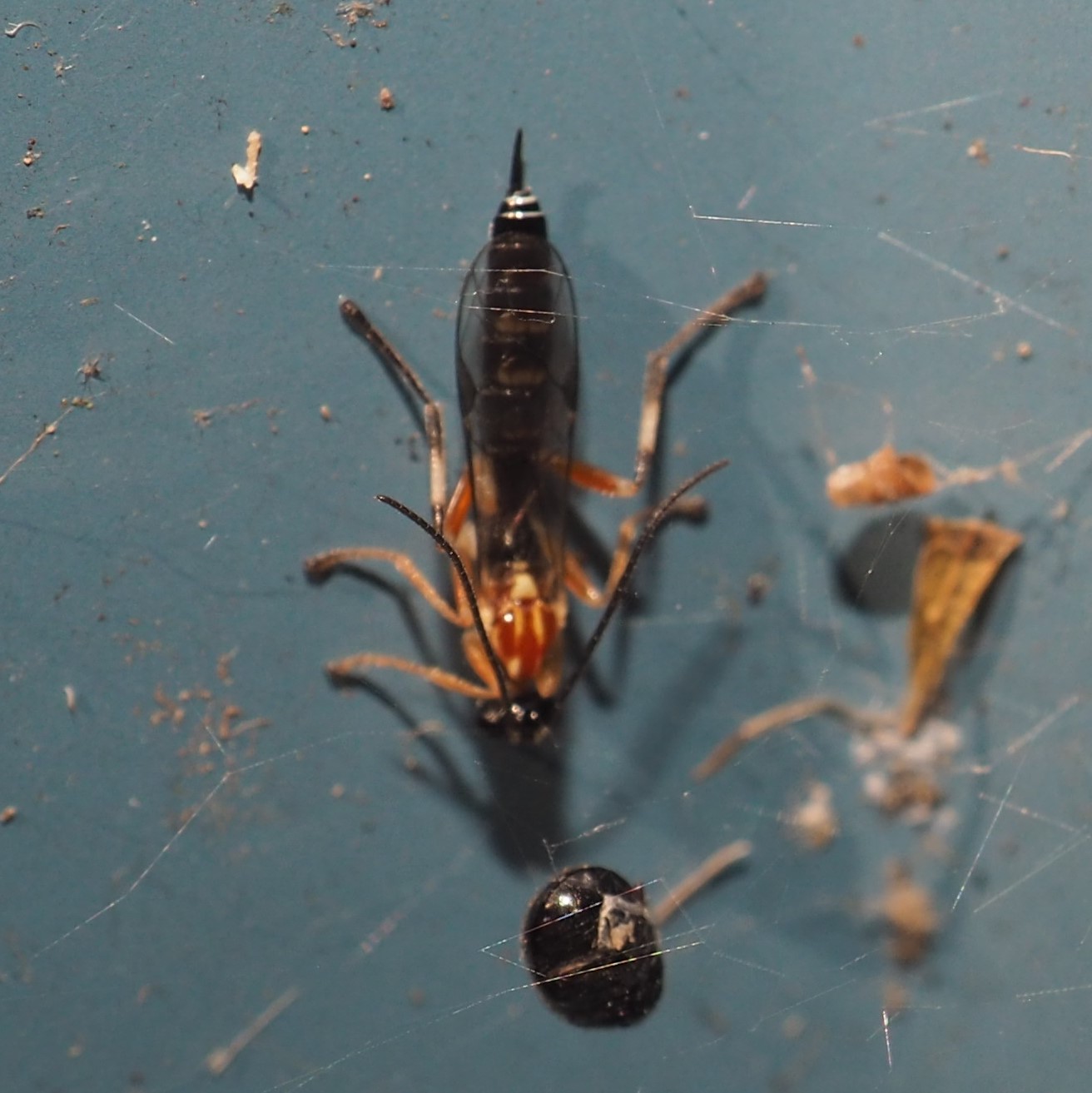

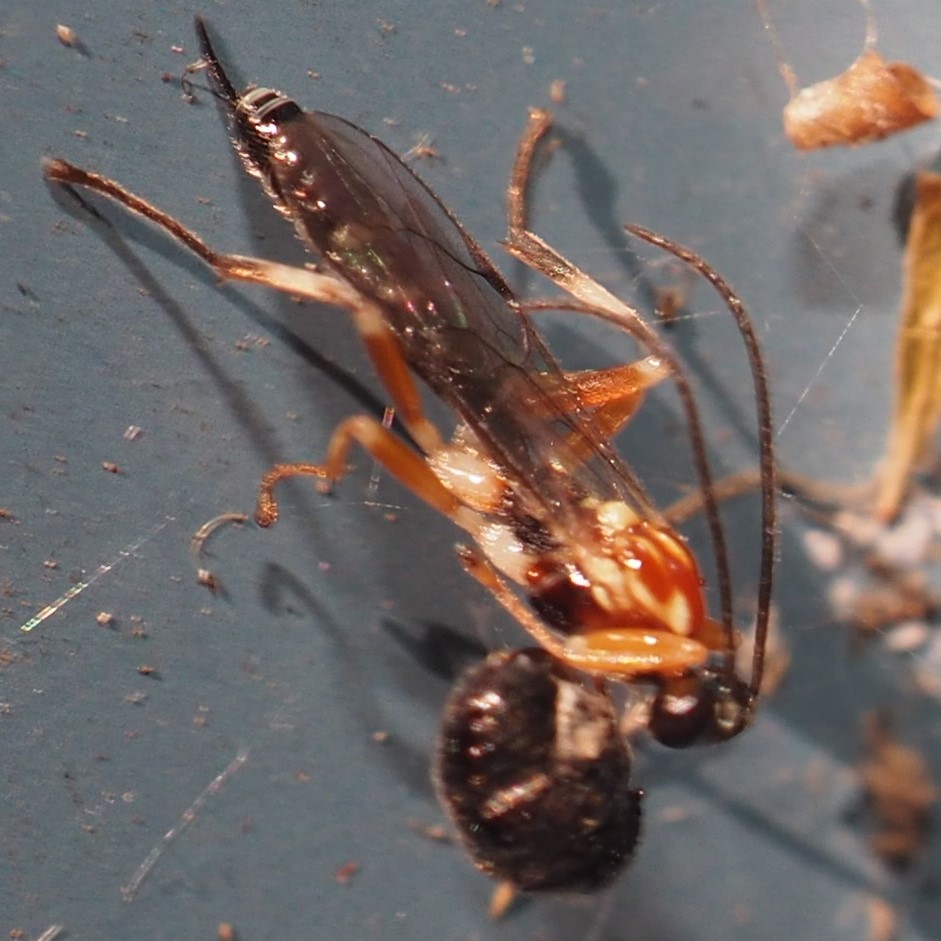
Keep watching! The wasp plants her ovipositor right into the Spider egg case. In picture 2, the shadow says it all! What do you think is happening? The Wasp is laying her eggs right into the Spider's eggs. When the Spider's eggs hatch, the Wasp's larvae will have fresh food for life.


Let's finish off with a couple of old Morphed Aster pictures. Click on these to enlarge them. You may use them for cards, etc., with attribution. Enjoy!
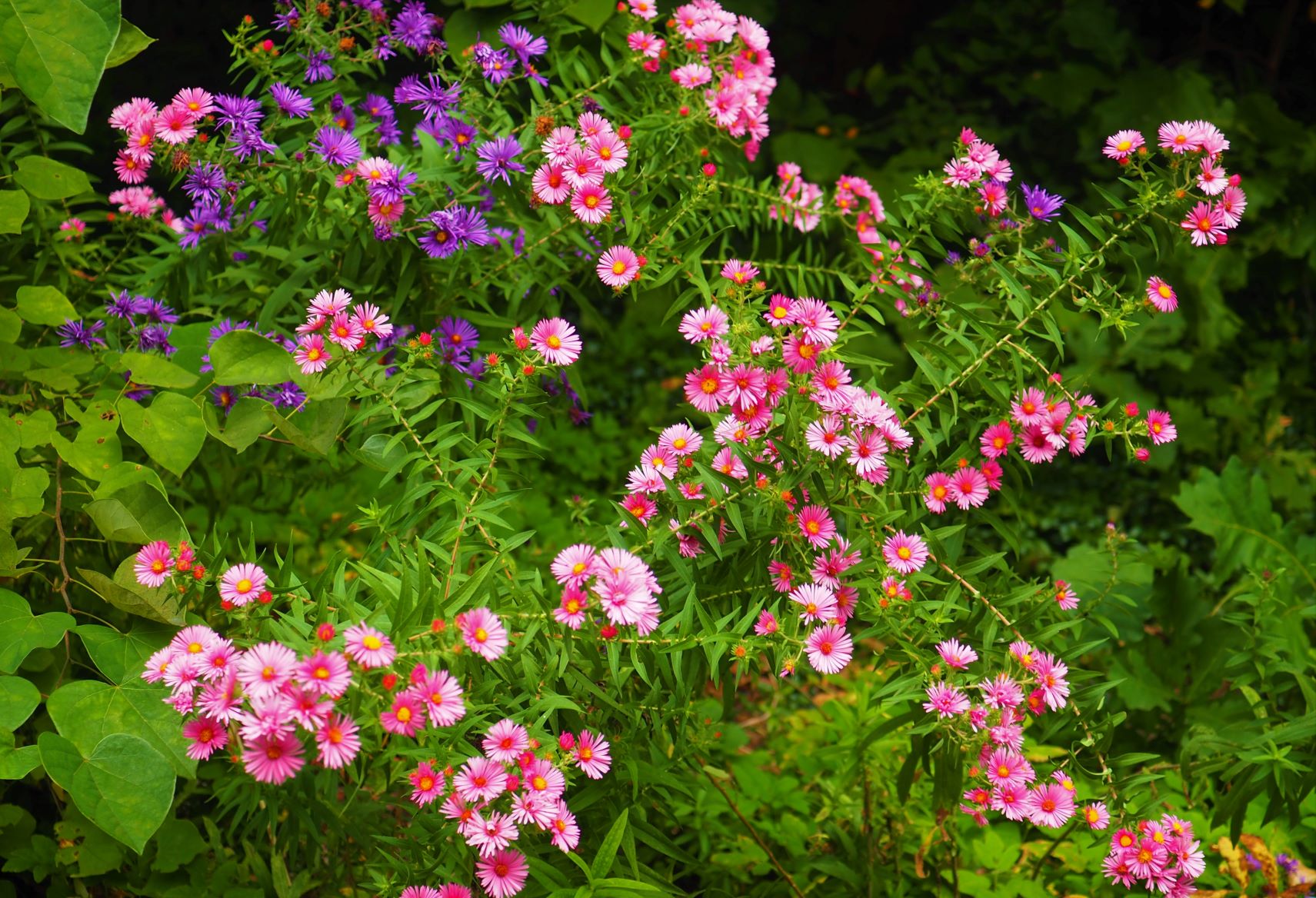
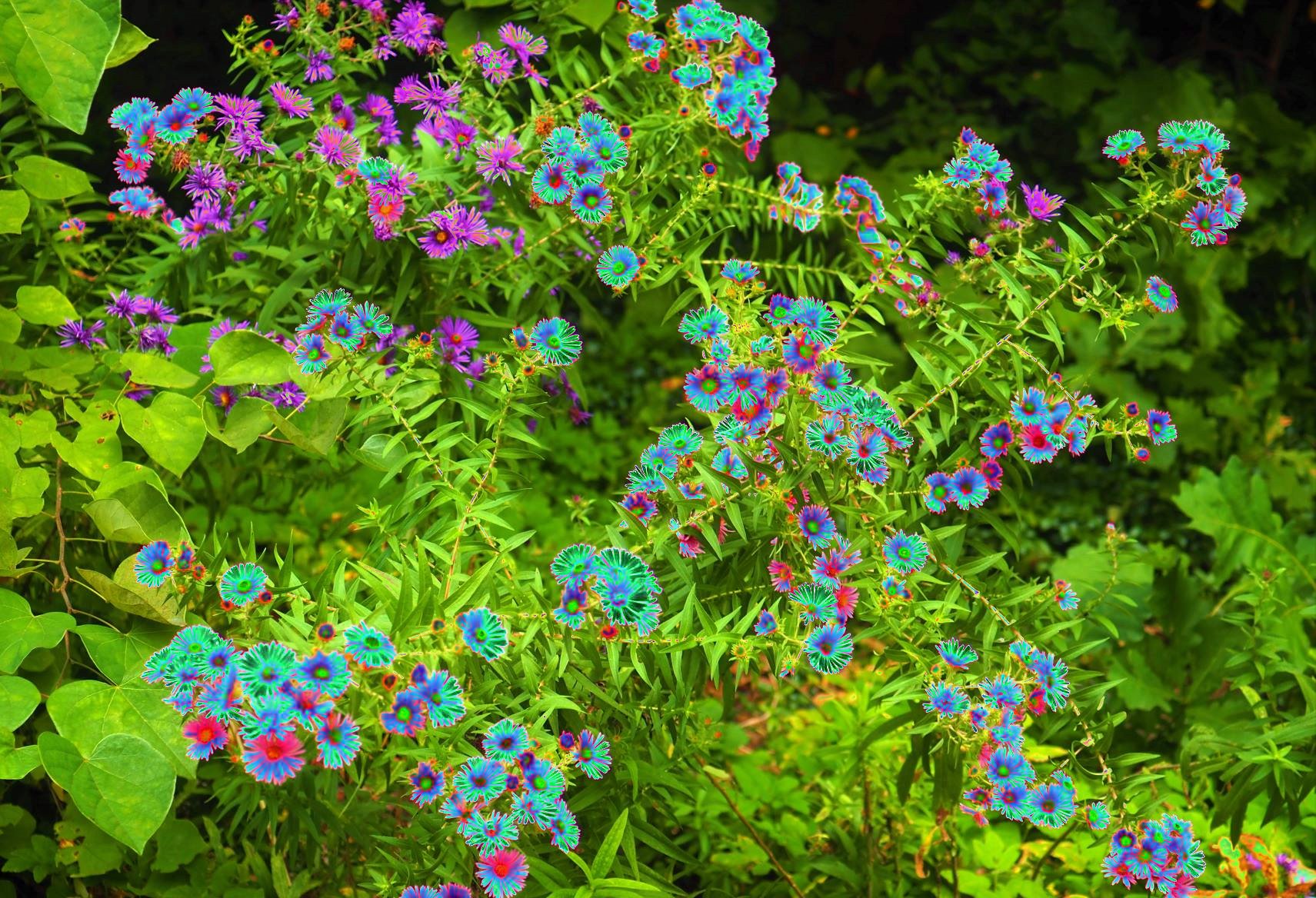
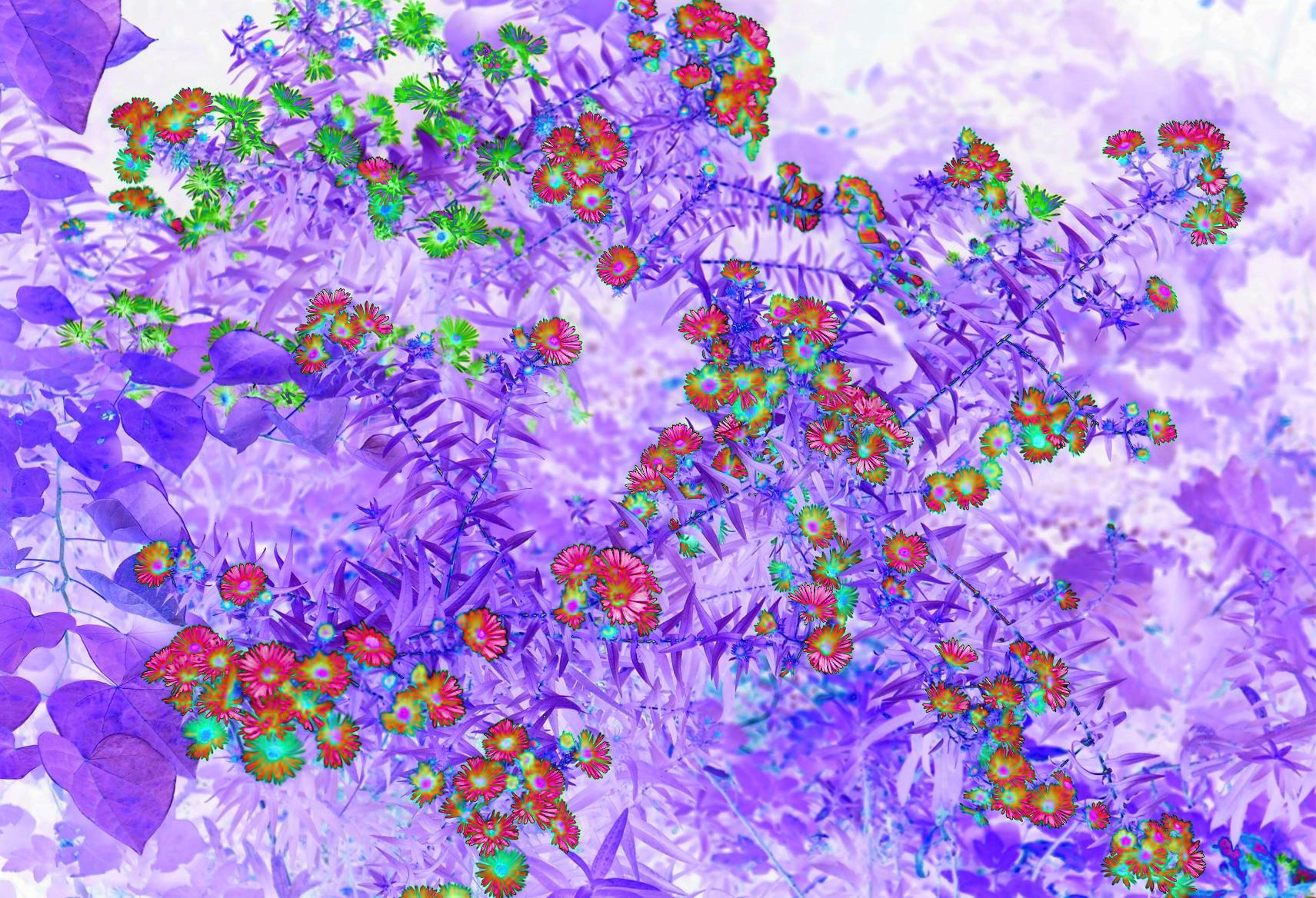
How fast these weeks go by! I hope that you are enjoying each day to the maximum. Every moment spent outside in the presence of Nature is especially precious to me, as is every moment talking with loved ones. Take care of yourselves and each other. Next week is already speeding towards us!
Love, Martha
Back to September 19, 2021
Forward to October 3, 2021
Back to main menu
copyright Martha O'Kennon 2021
















































































 and 2 with fish 9 24 21 1.jpg)





















